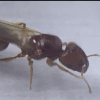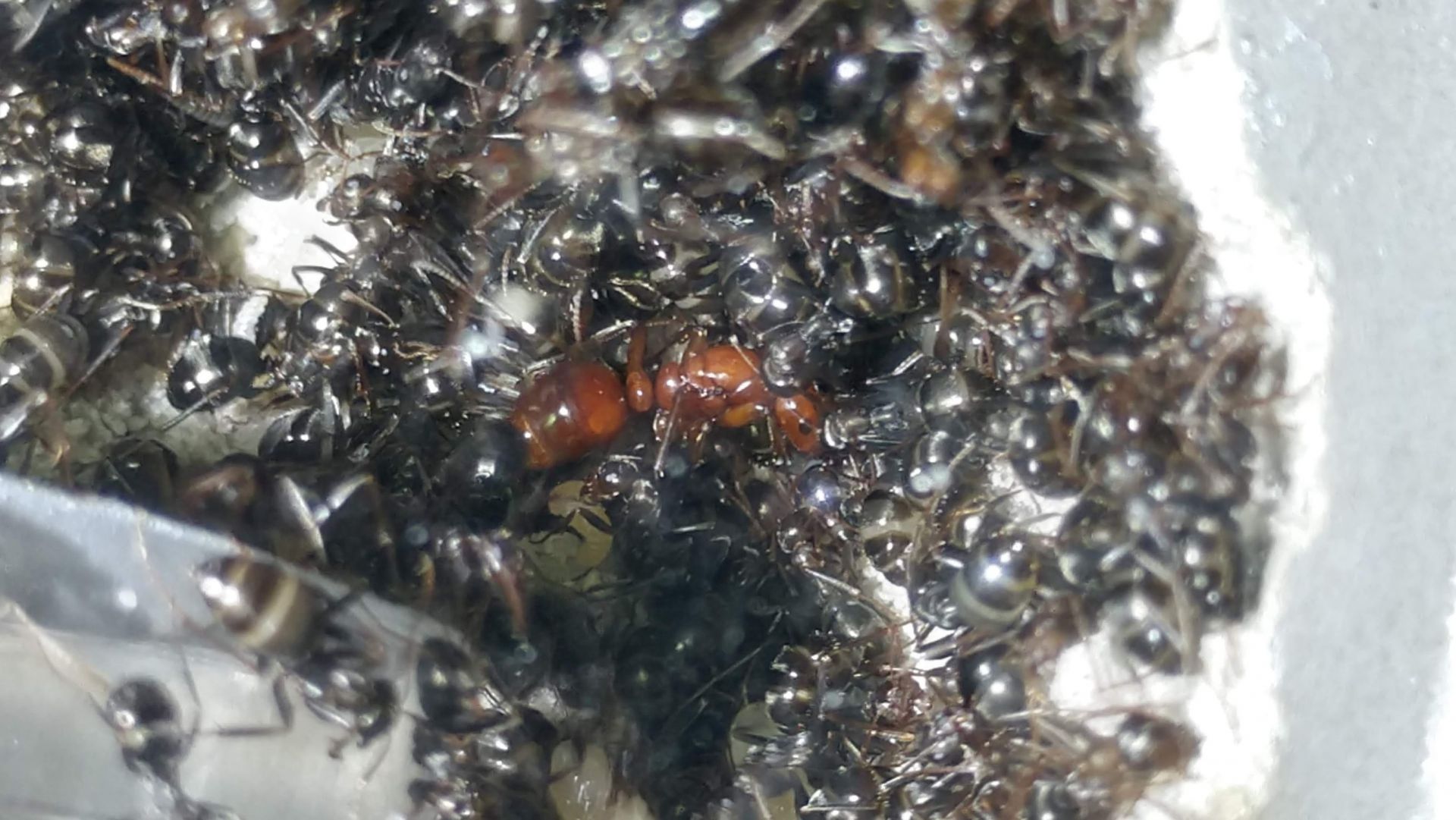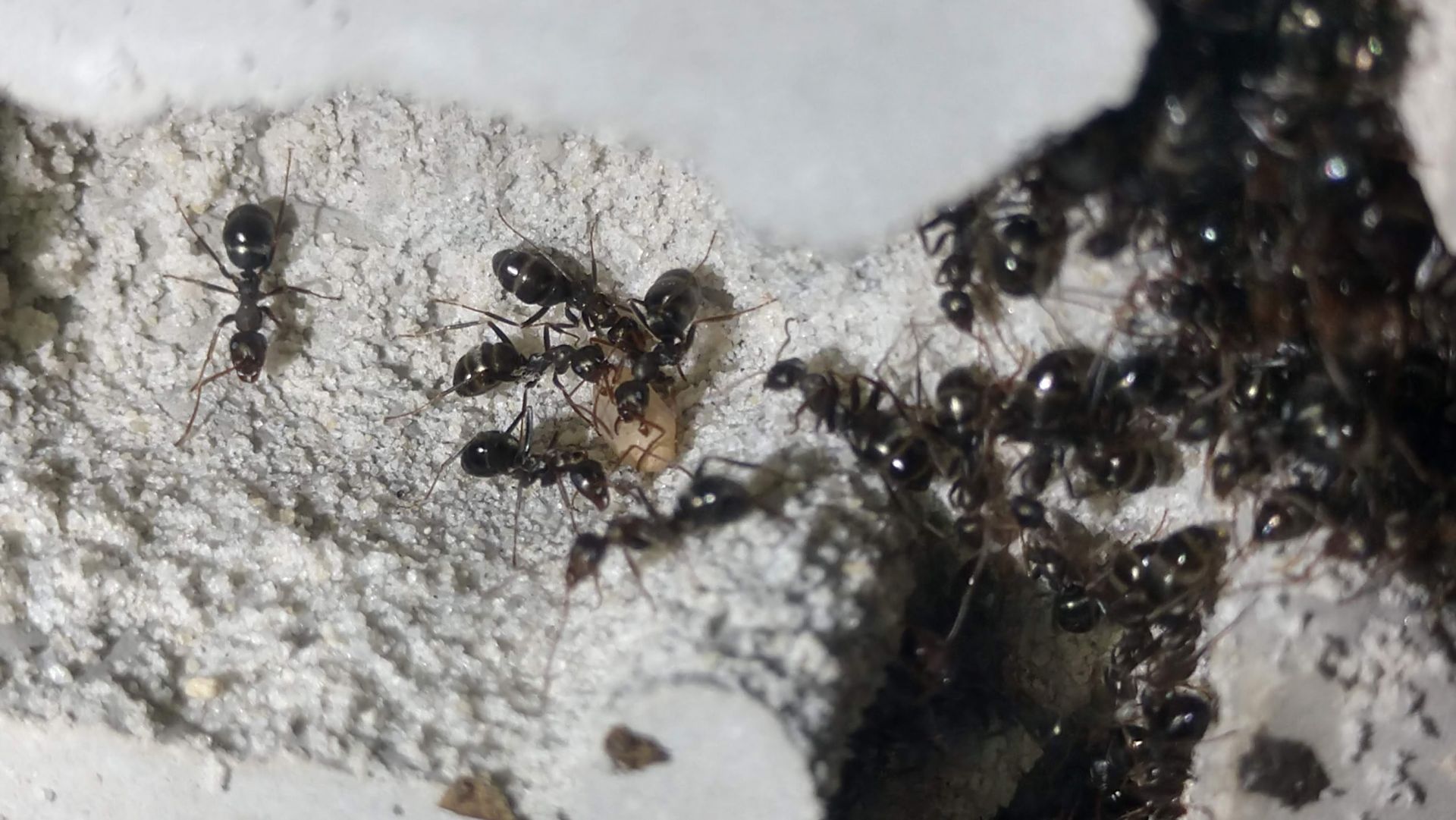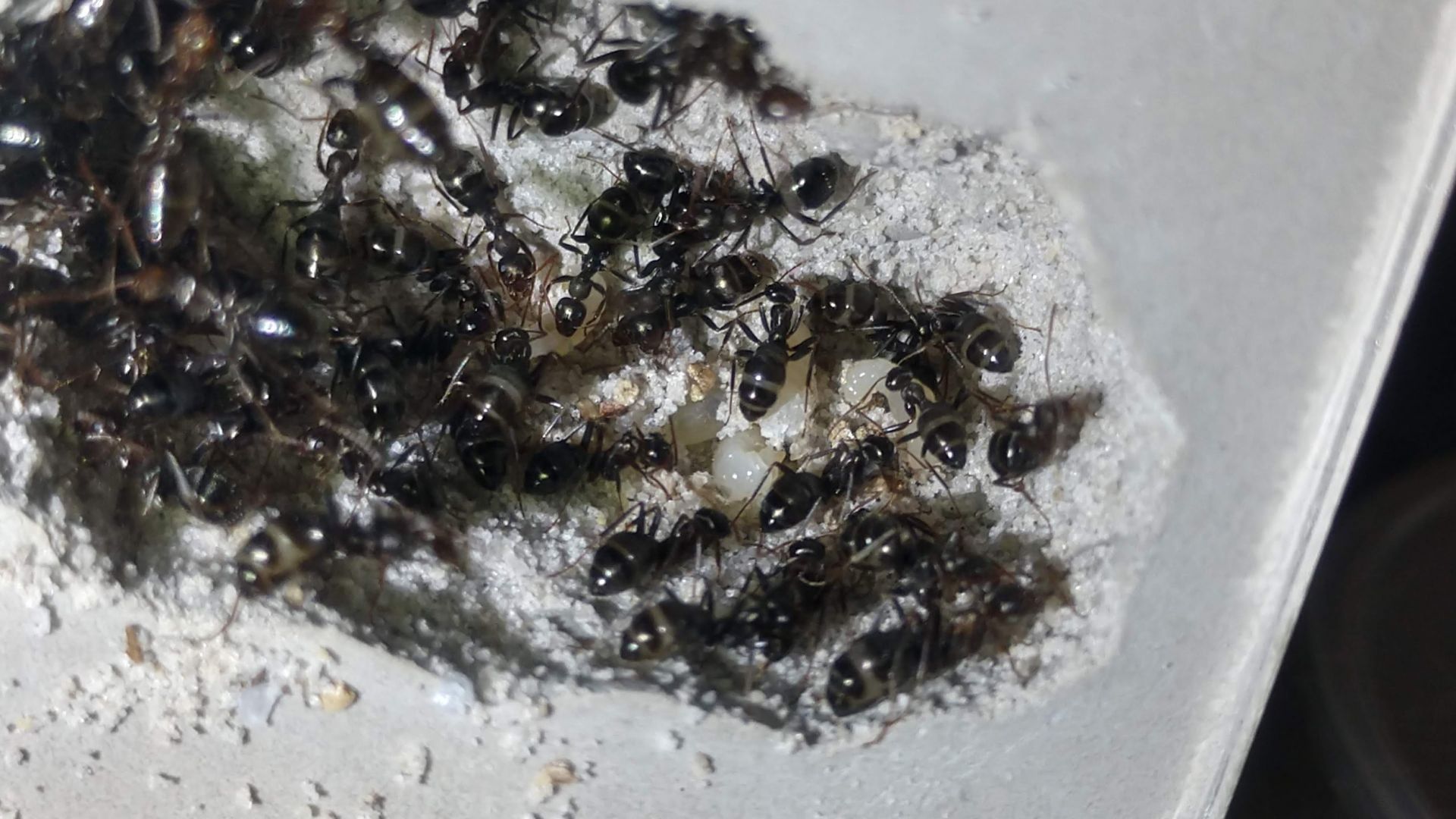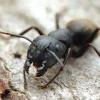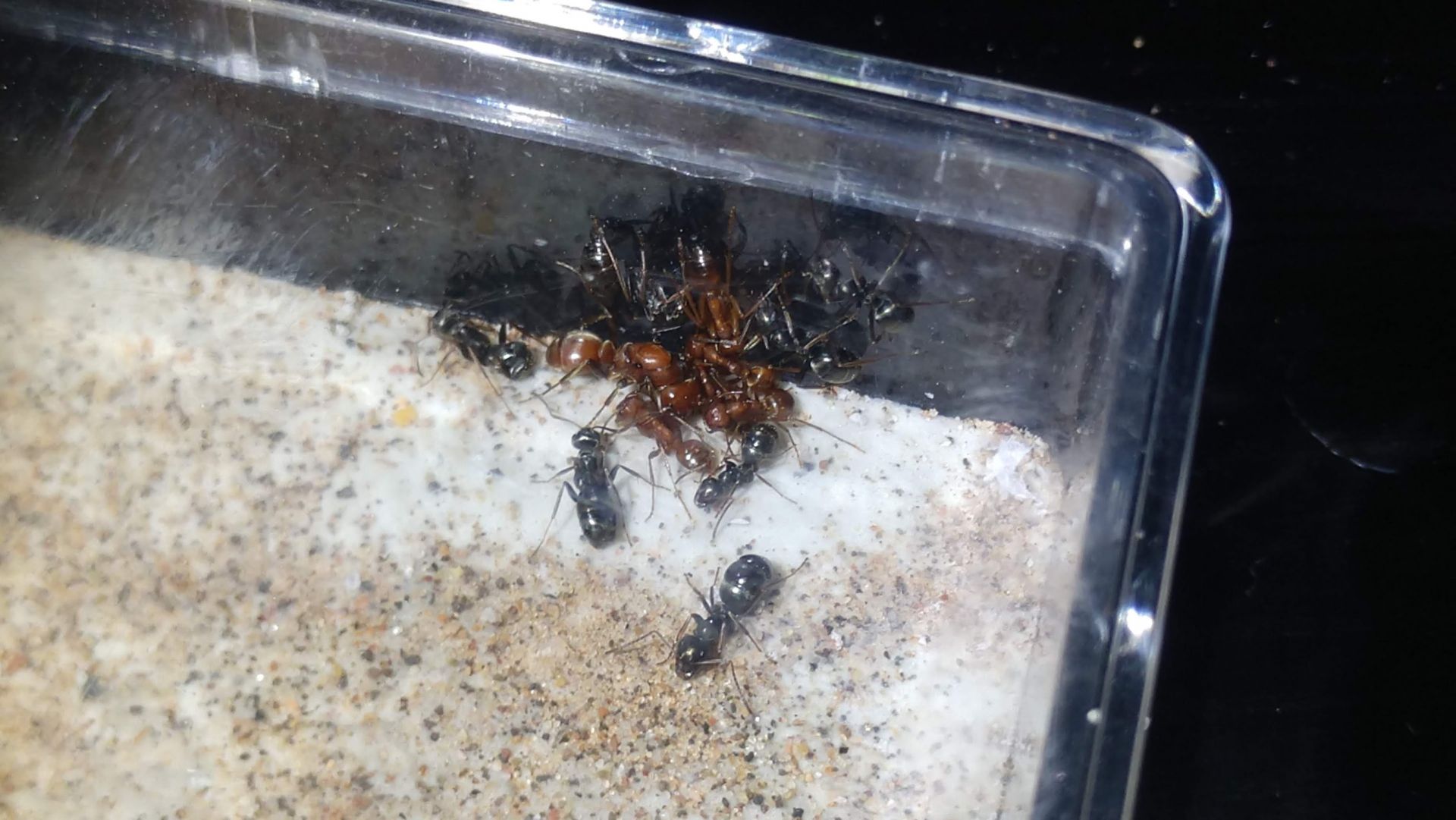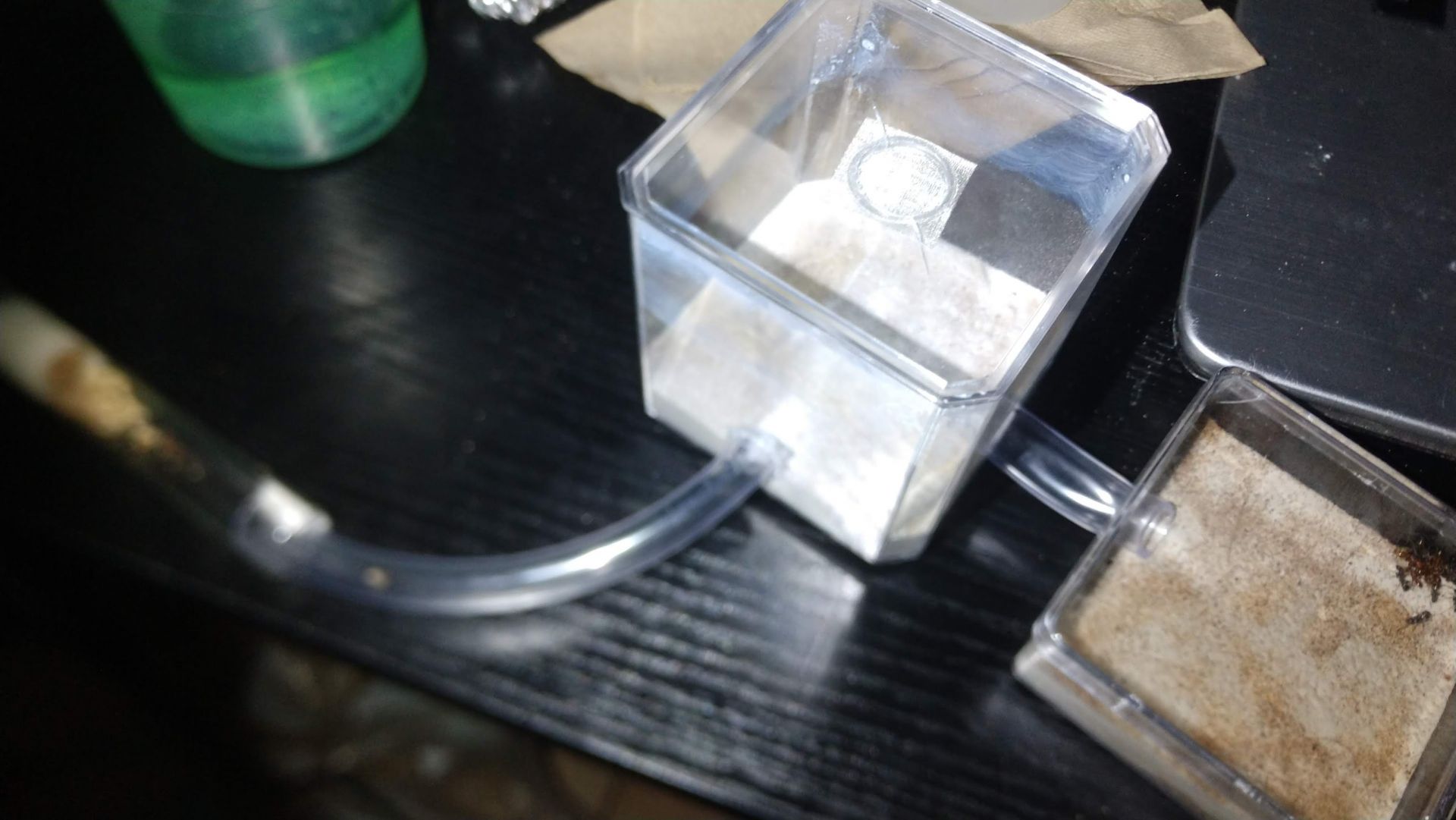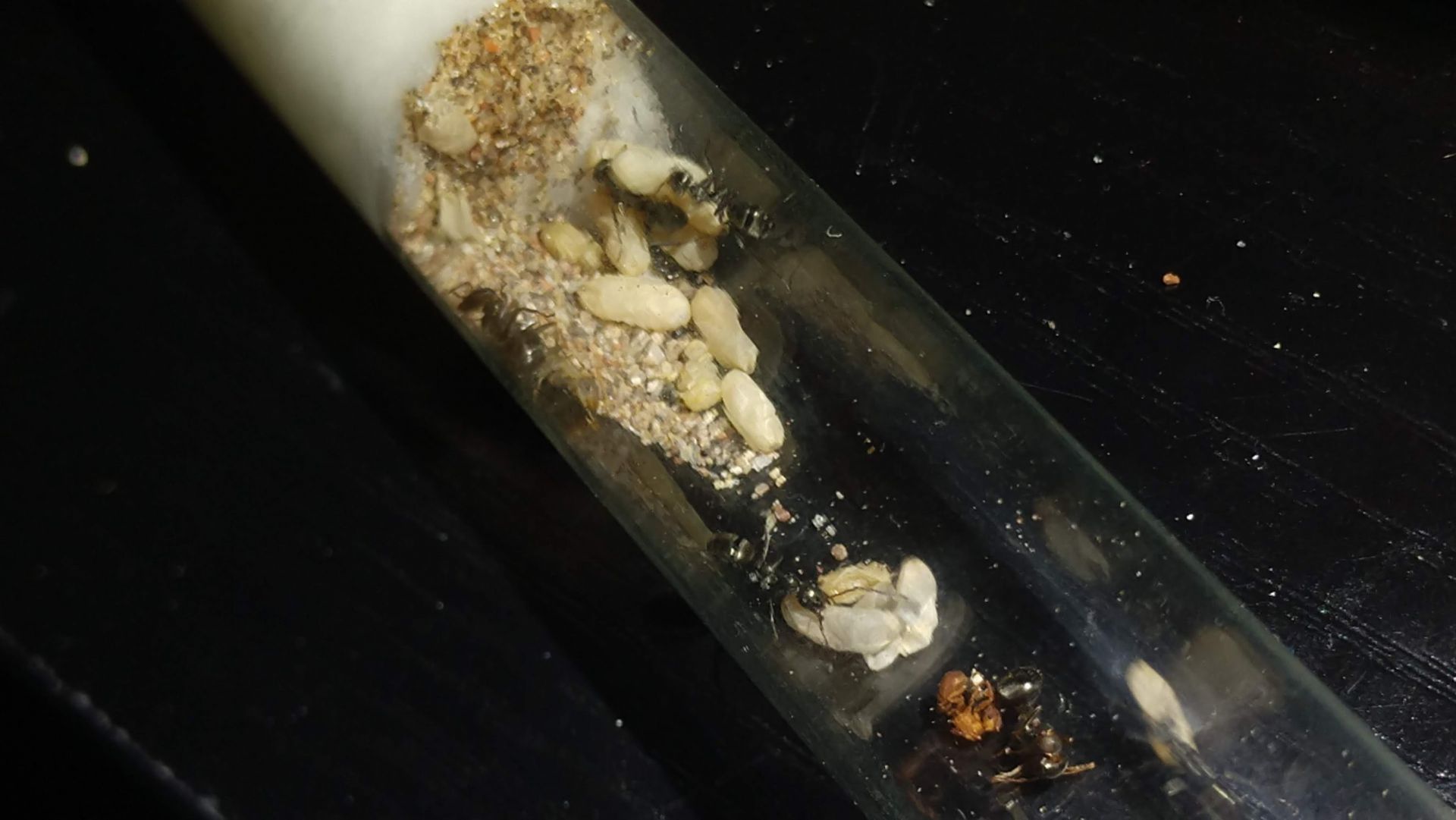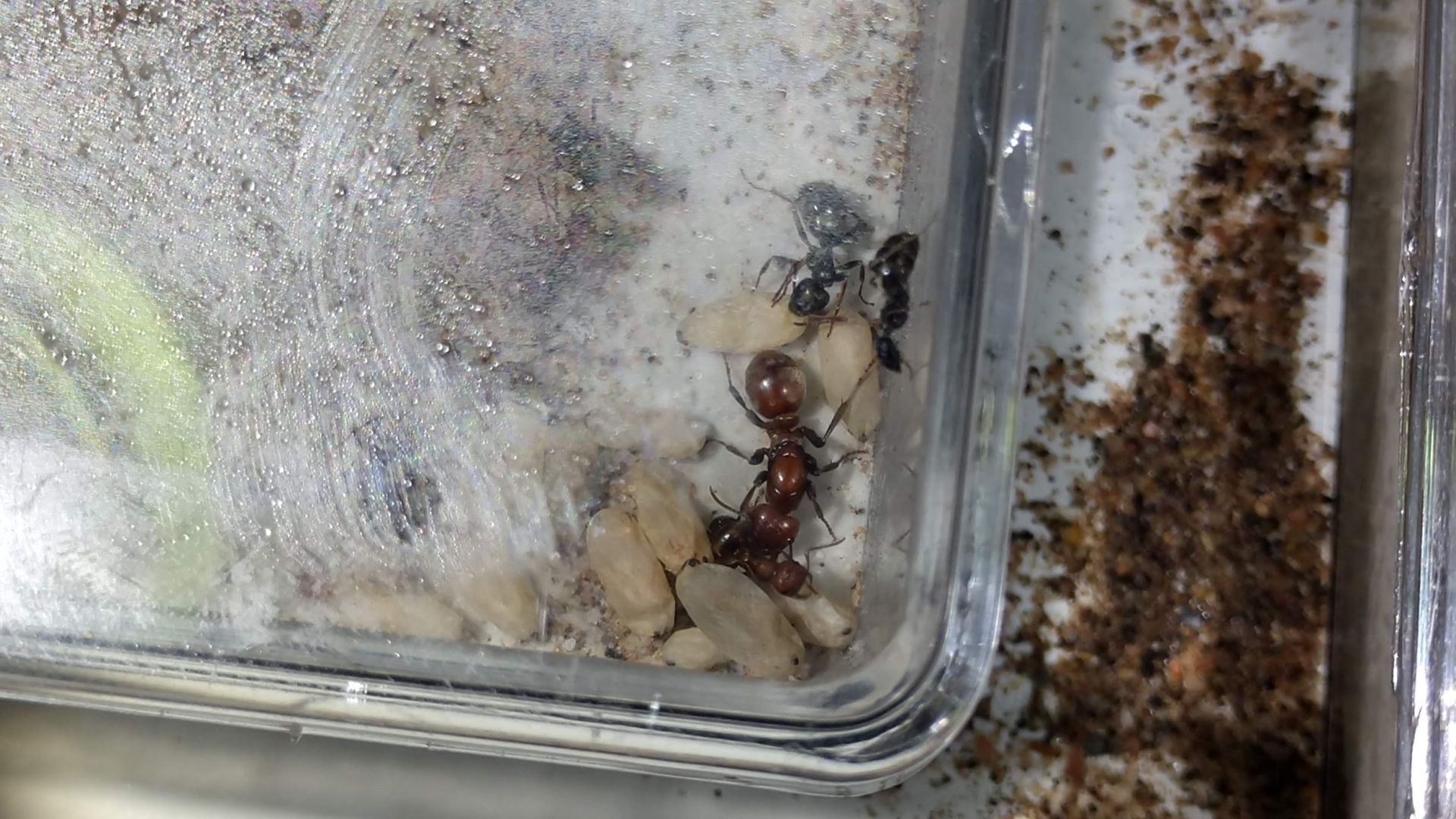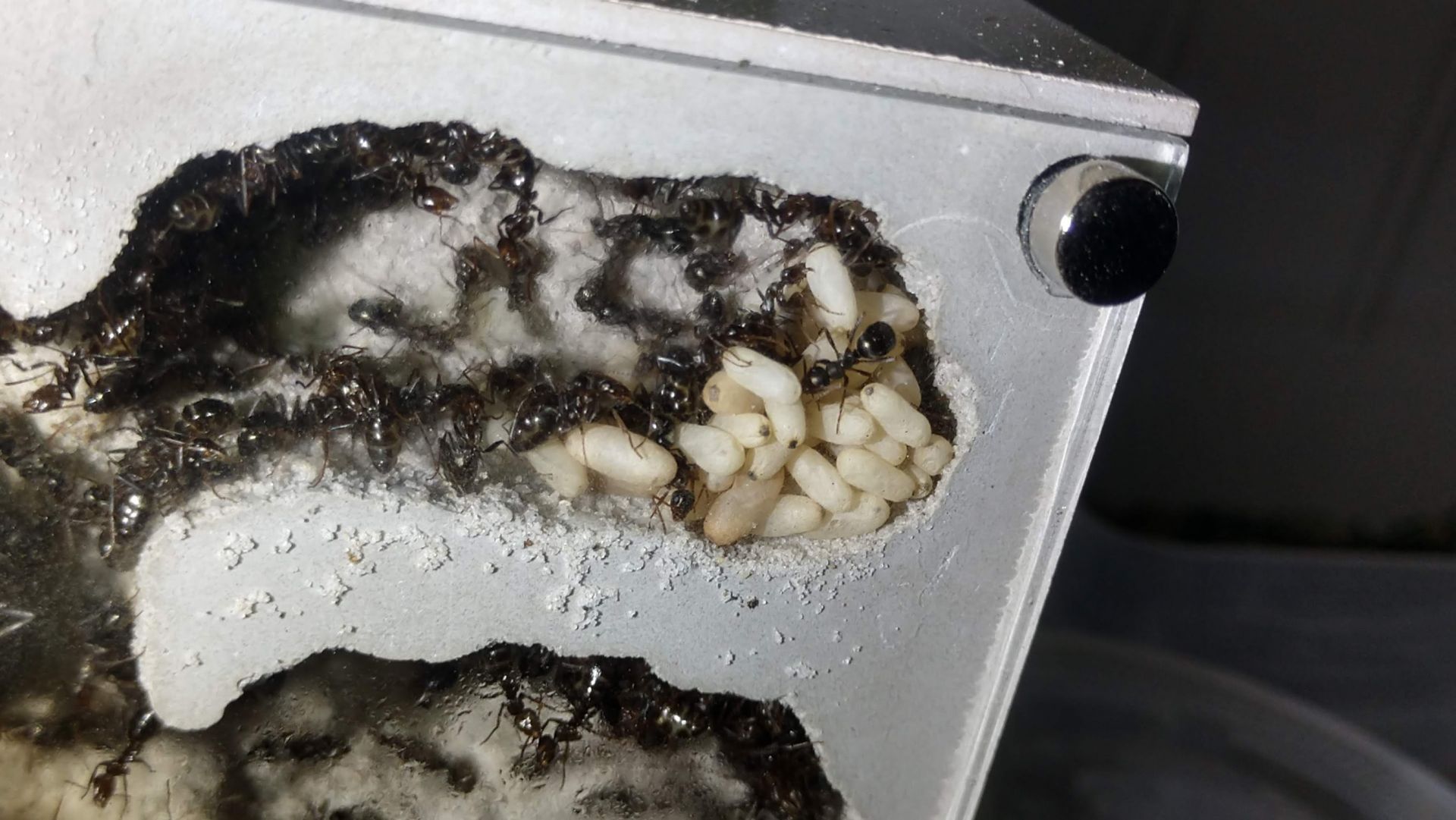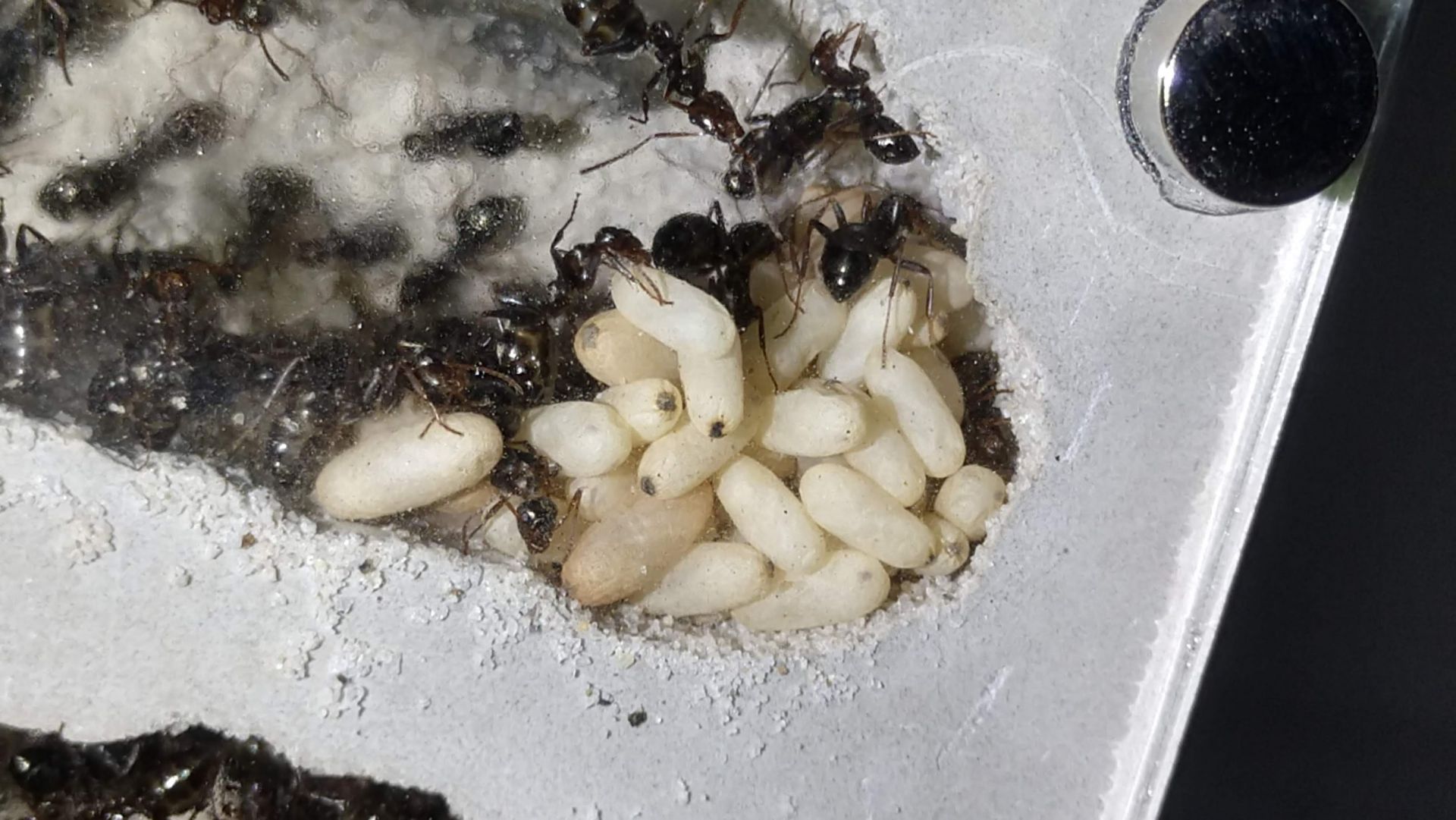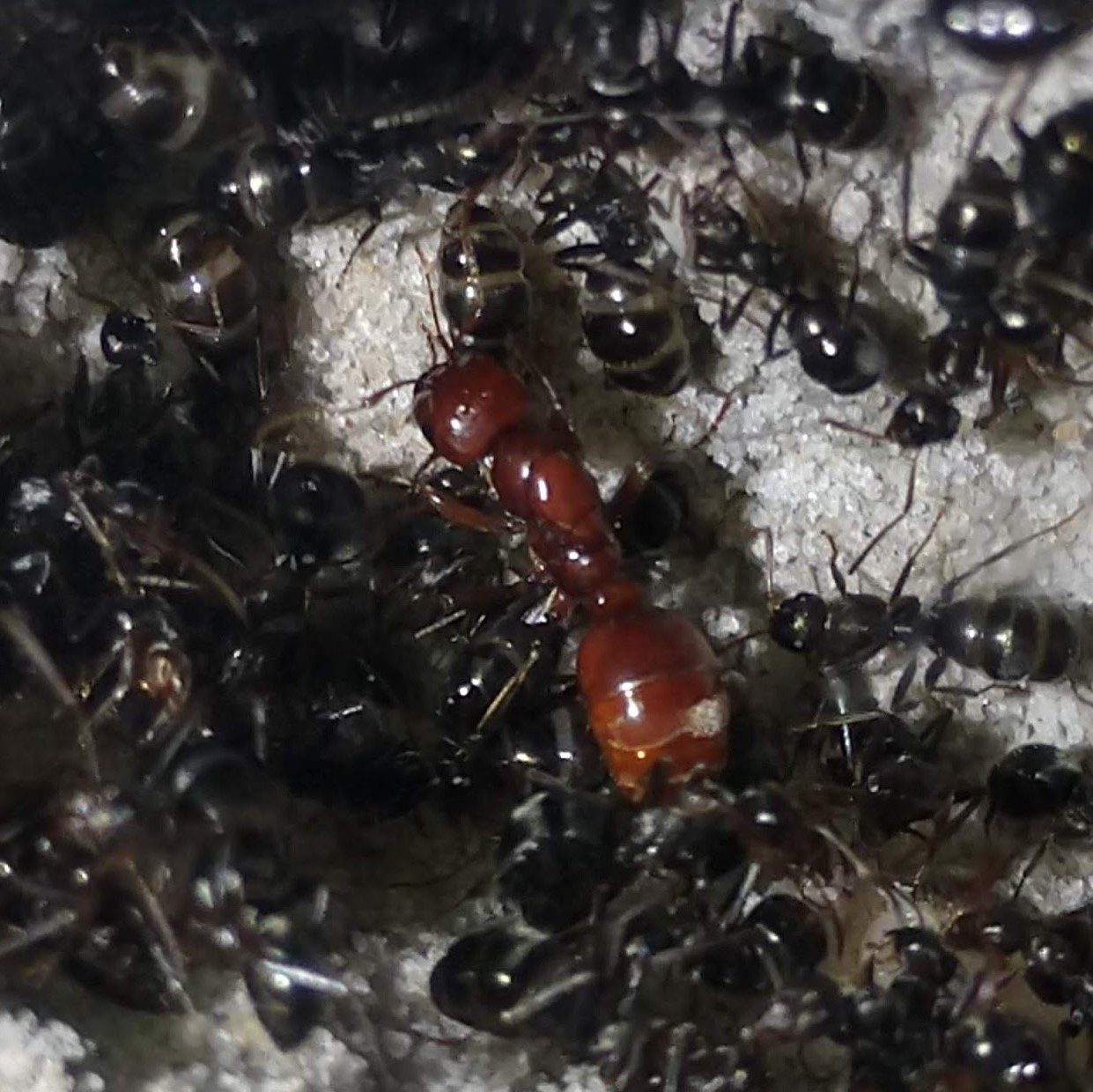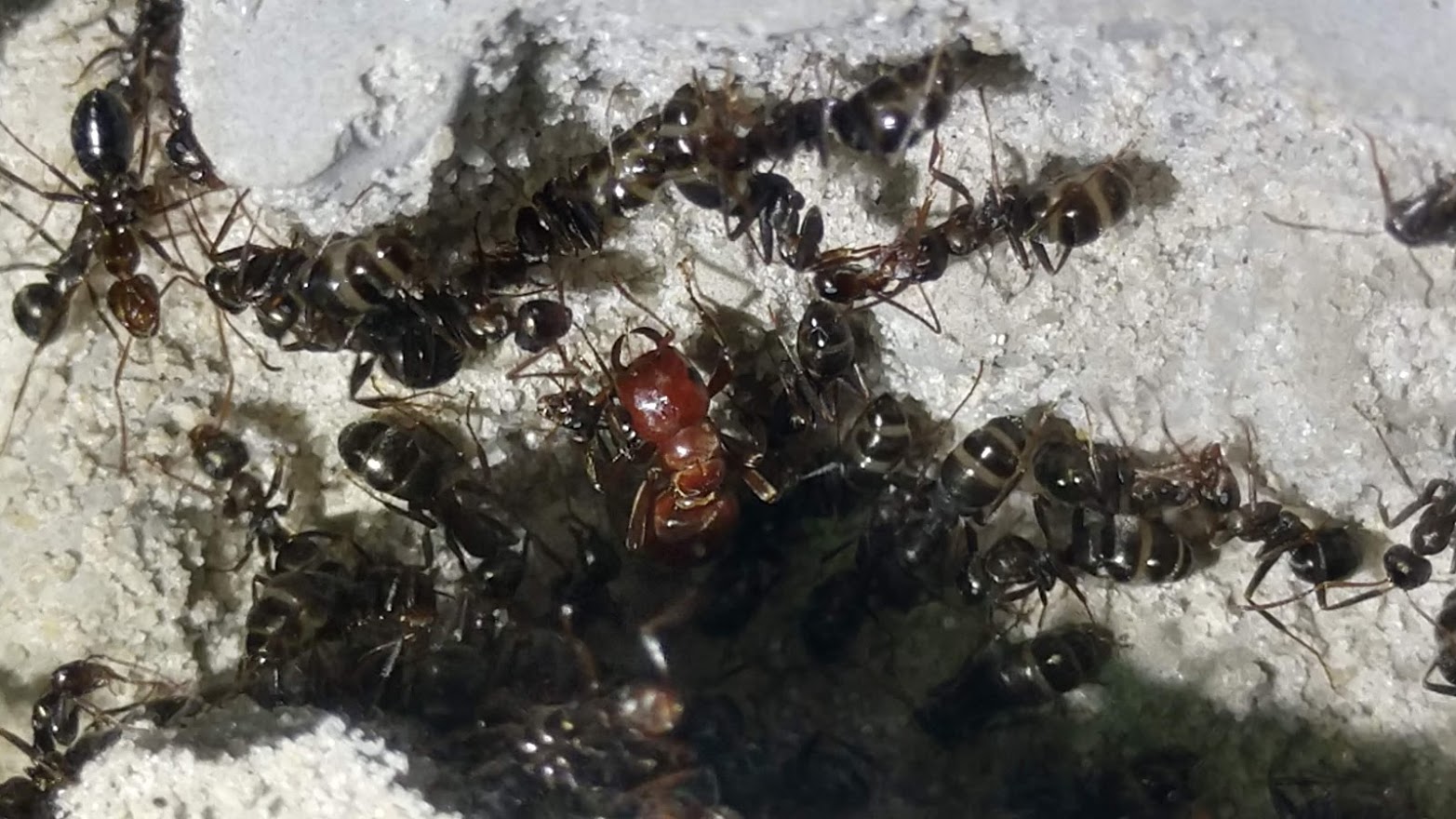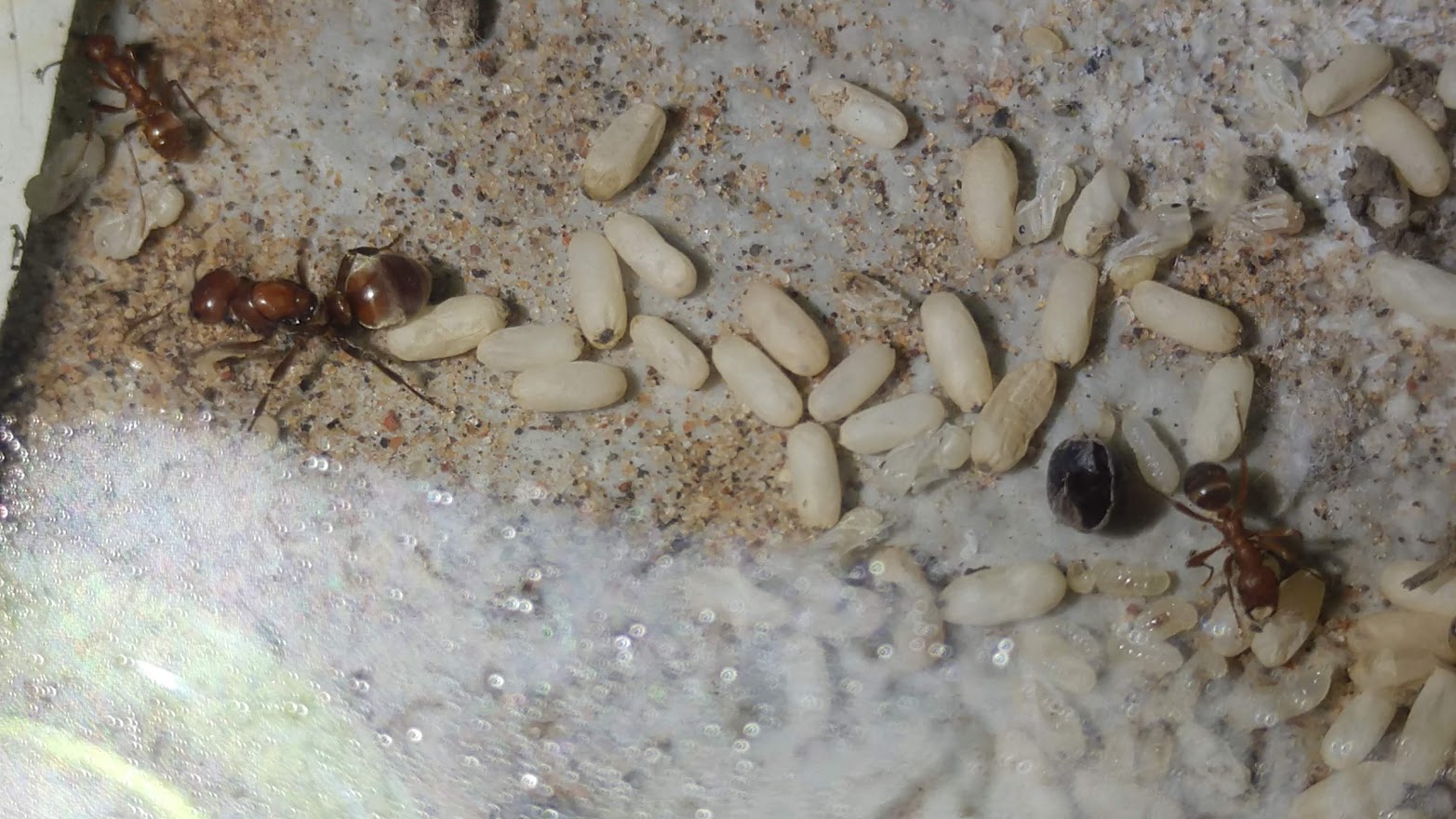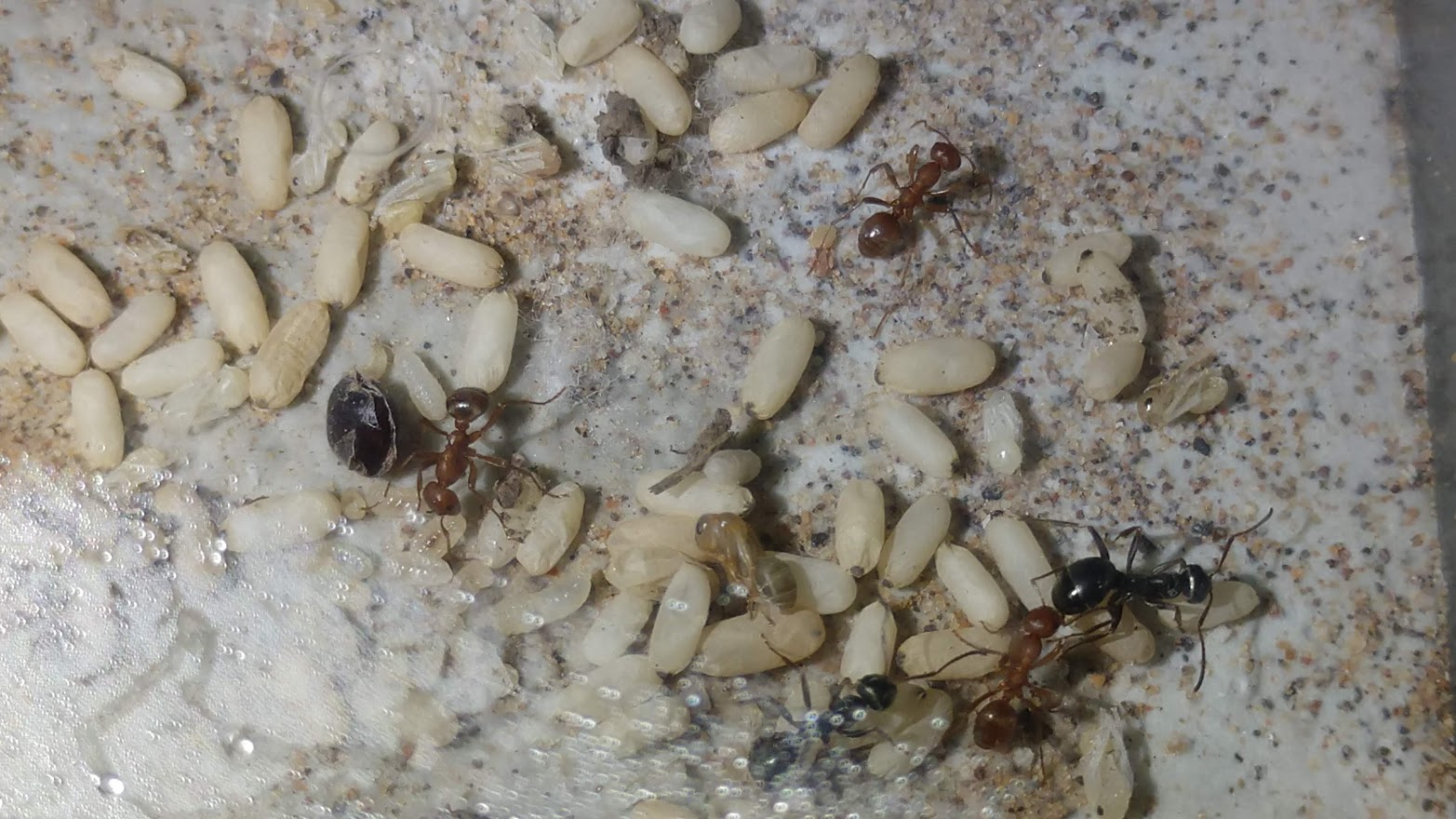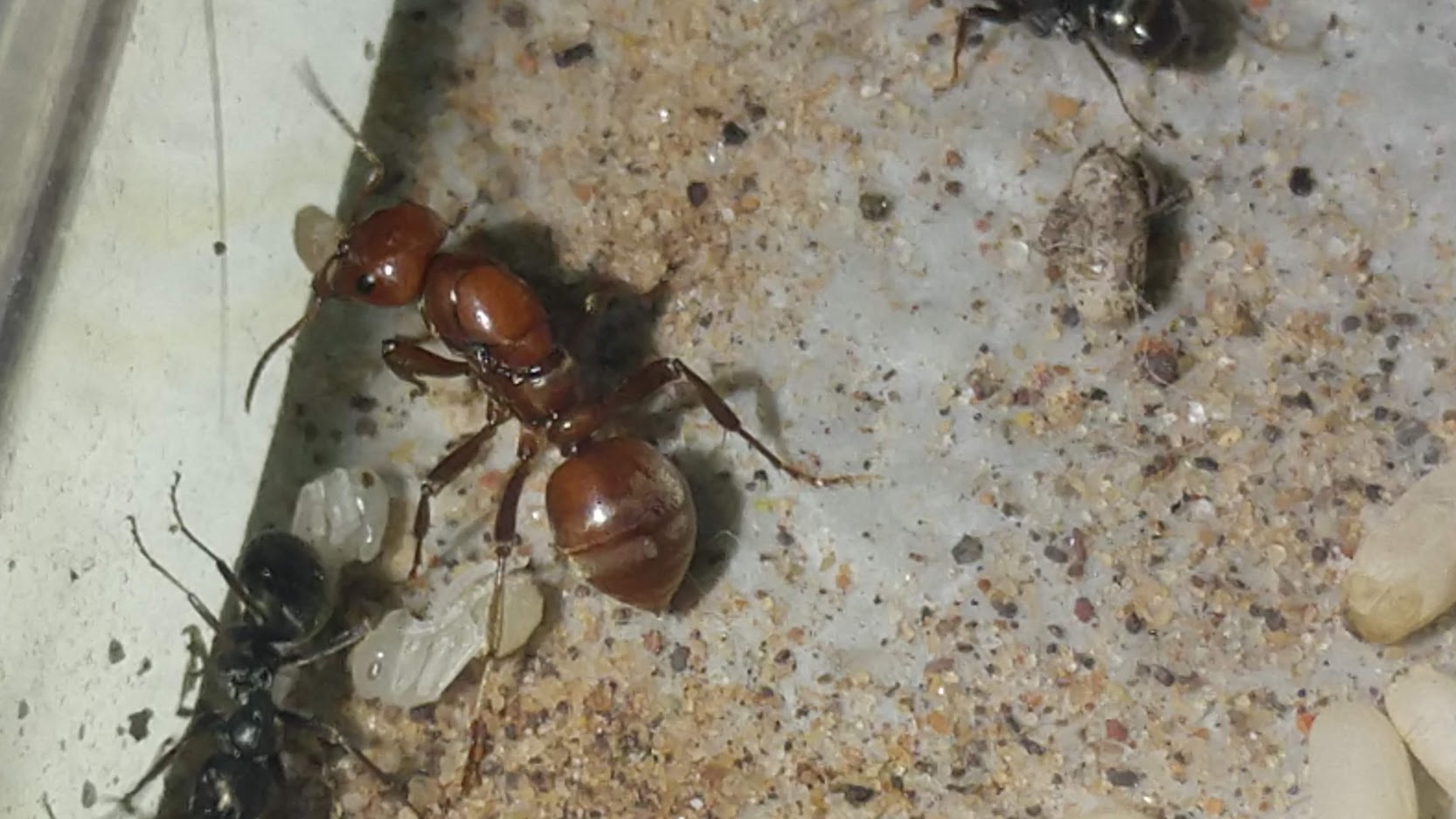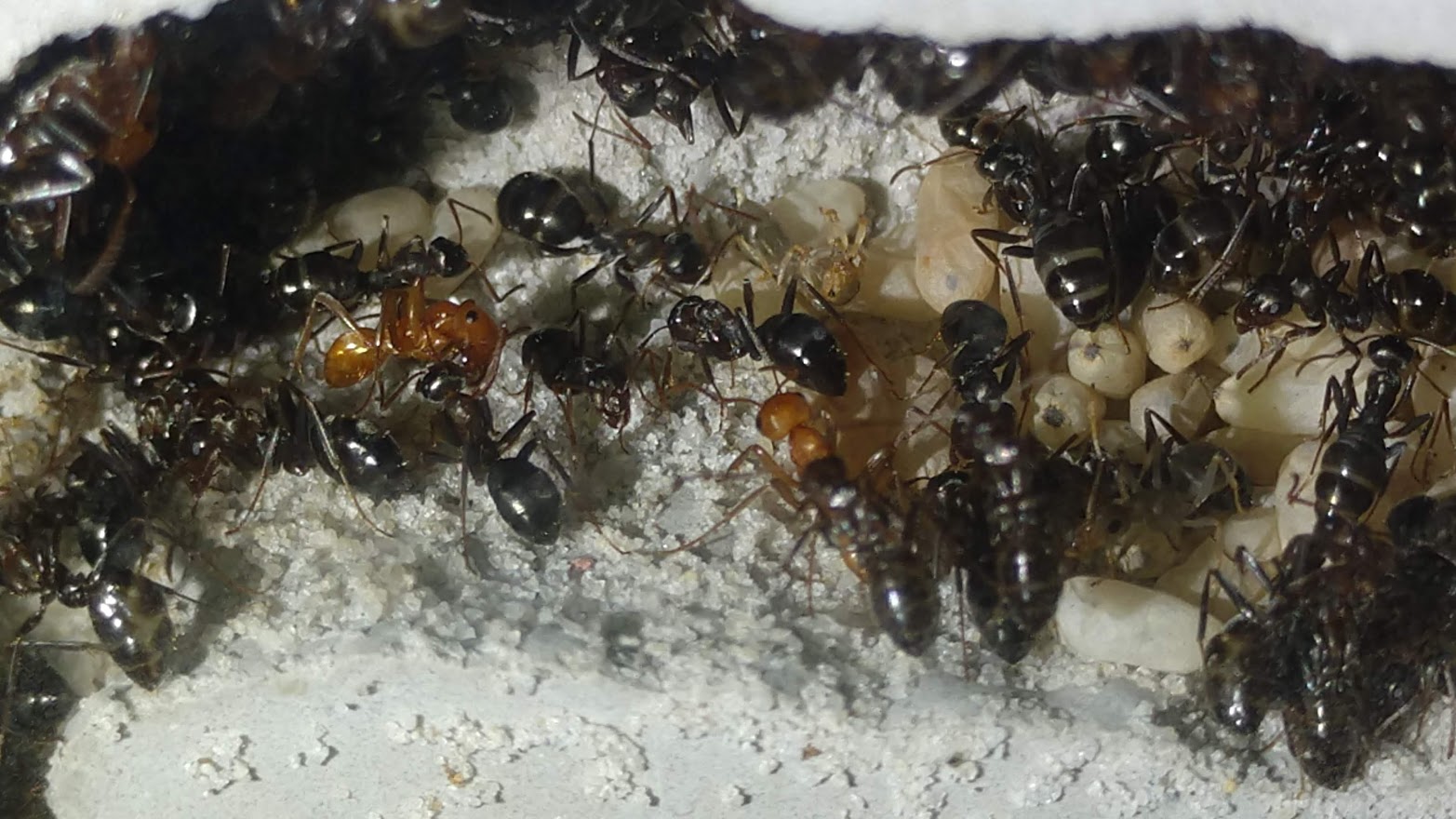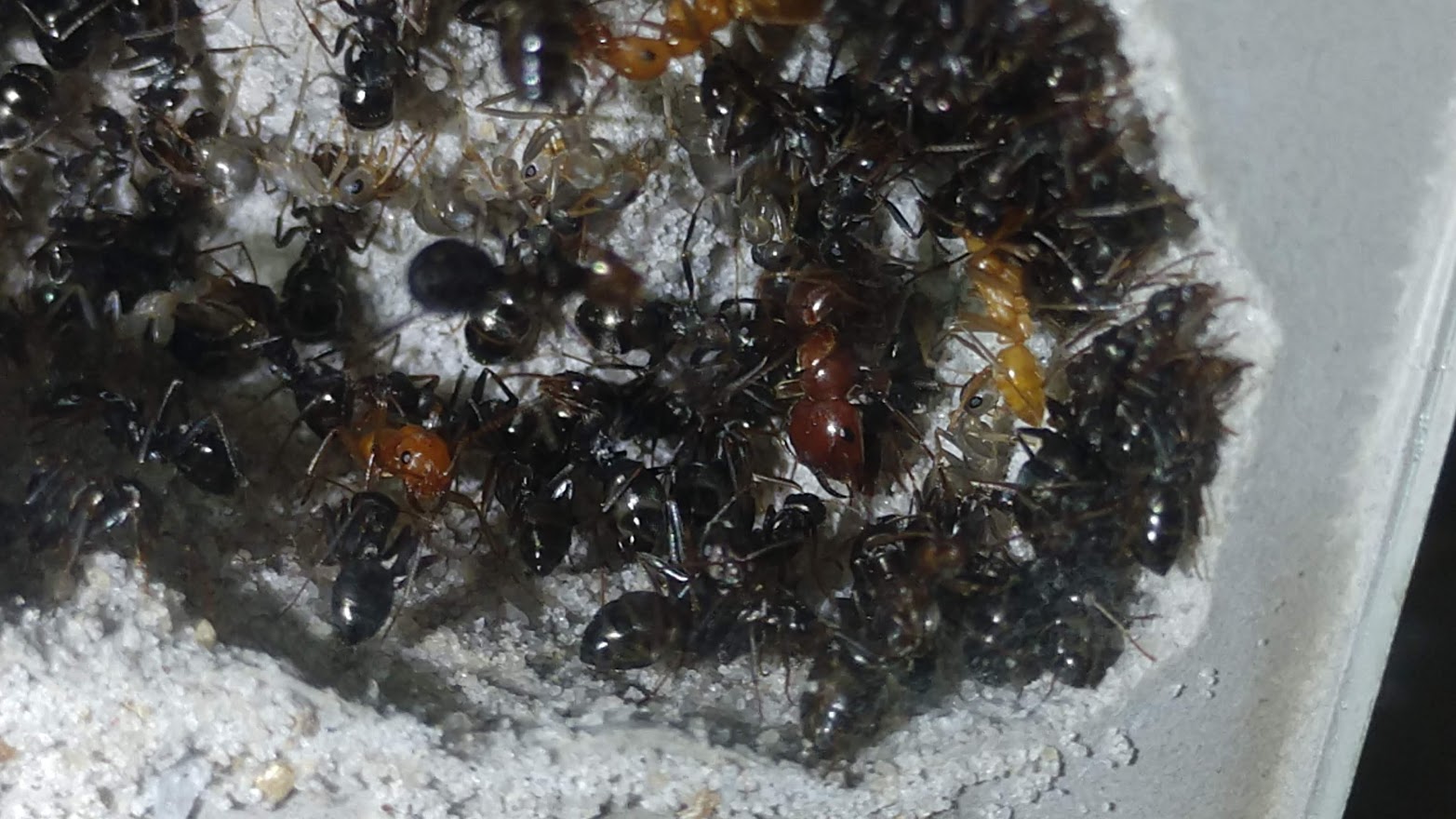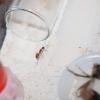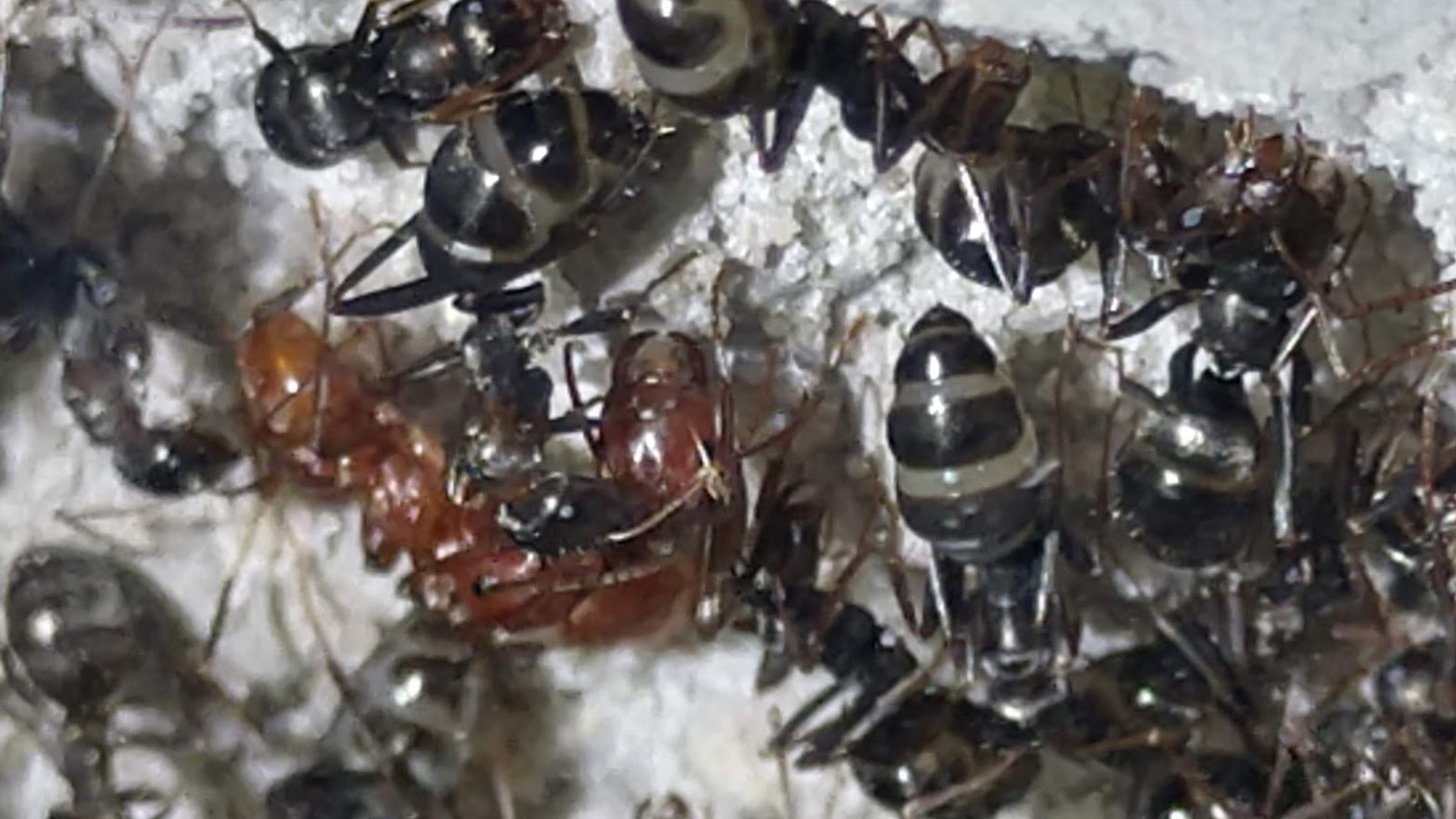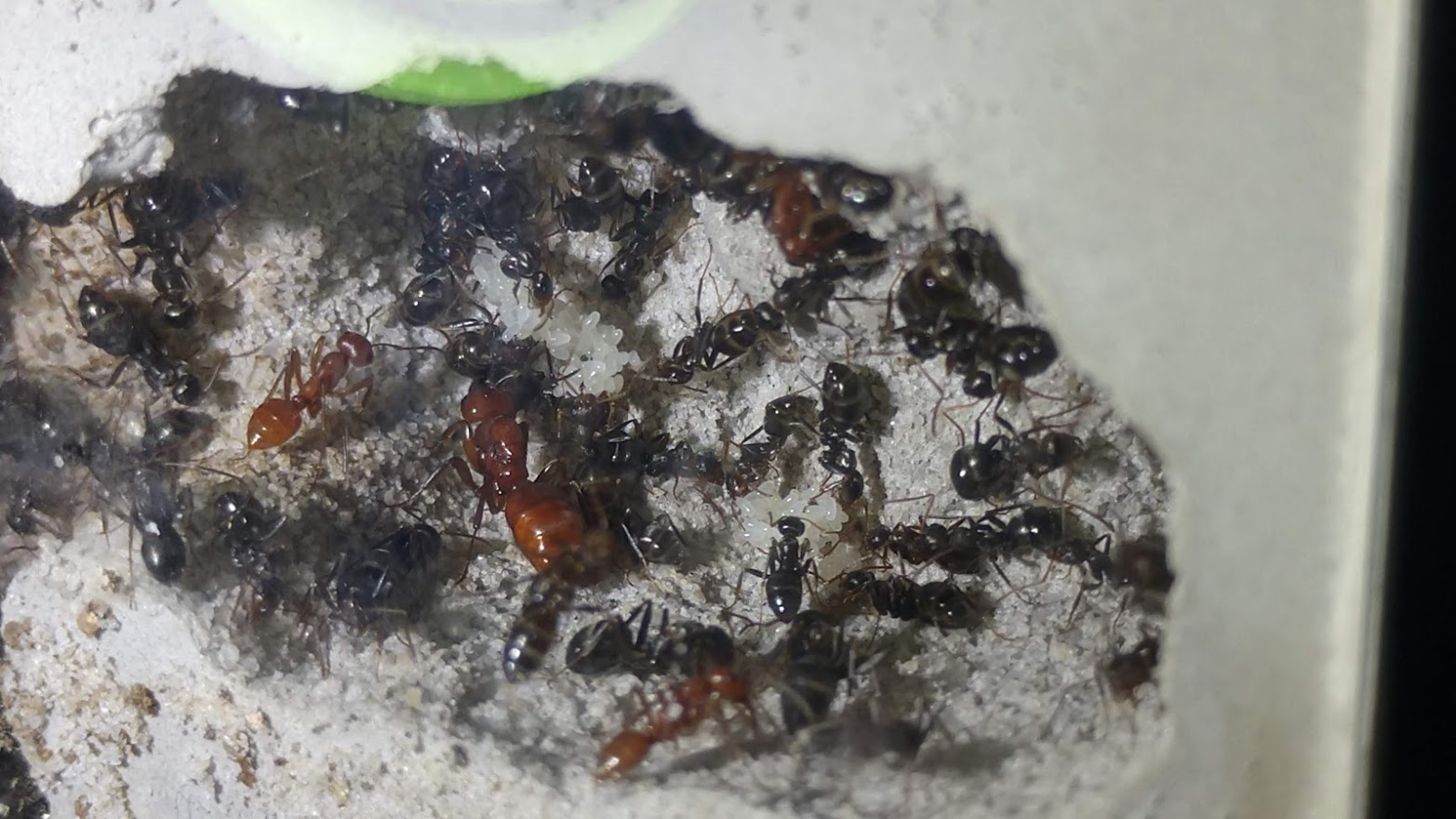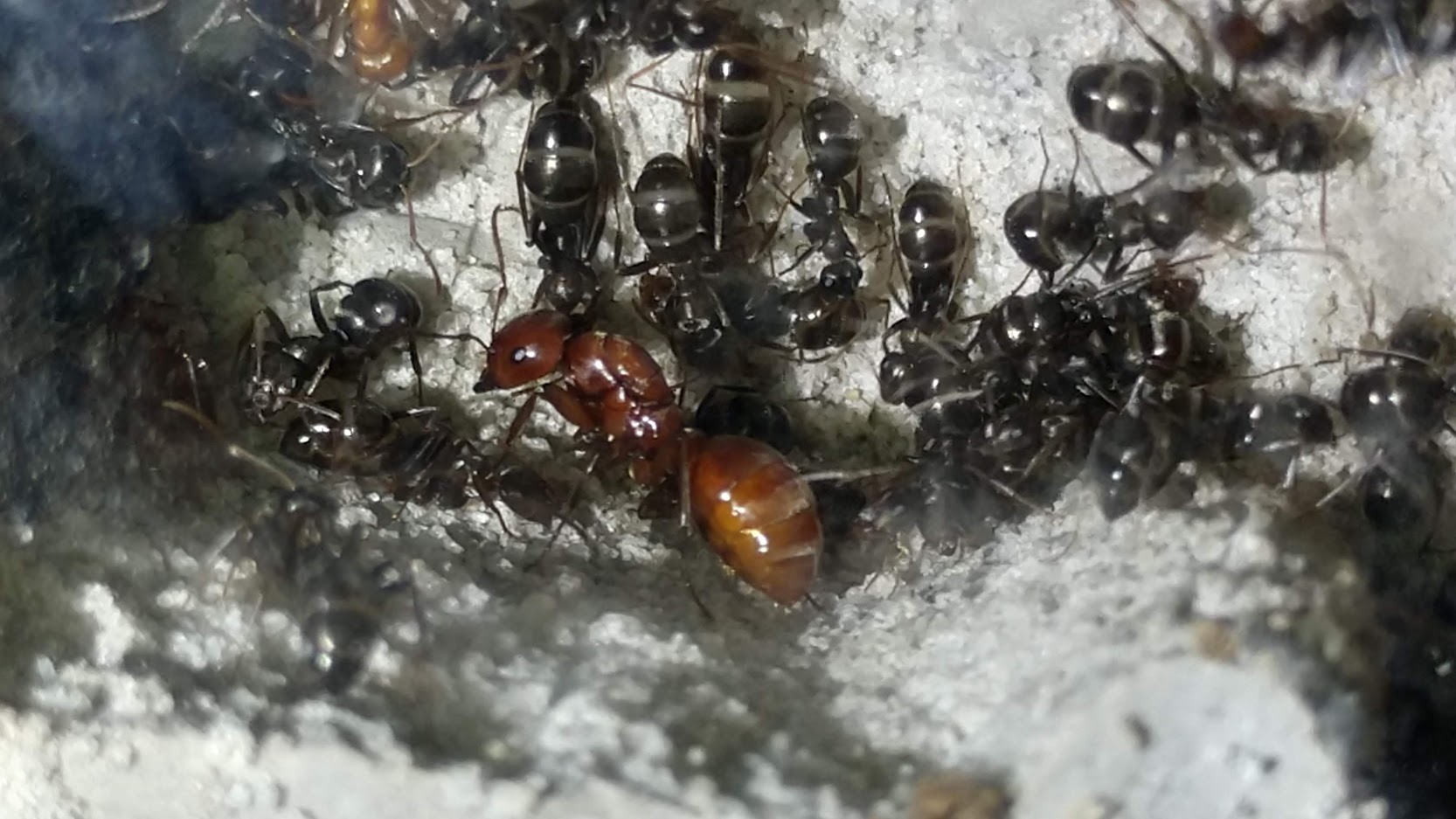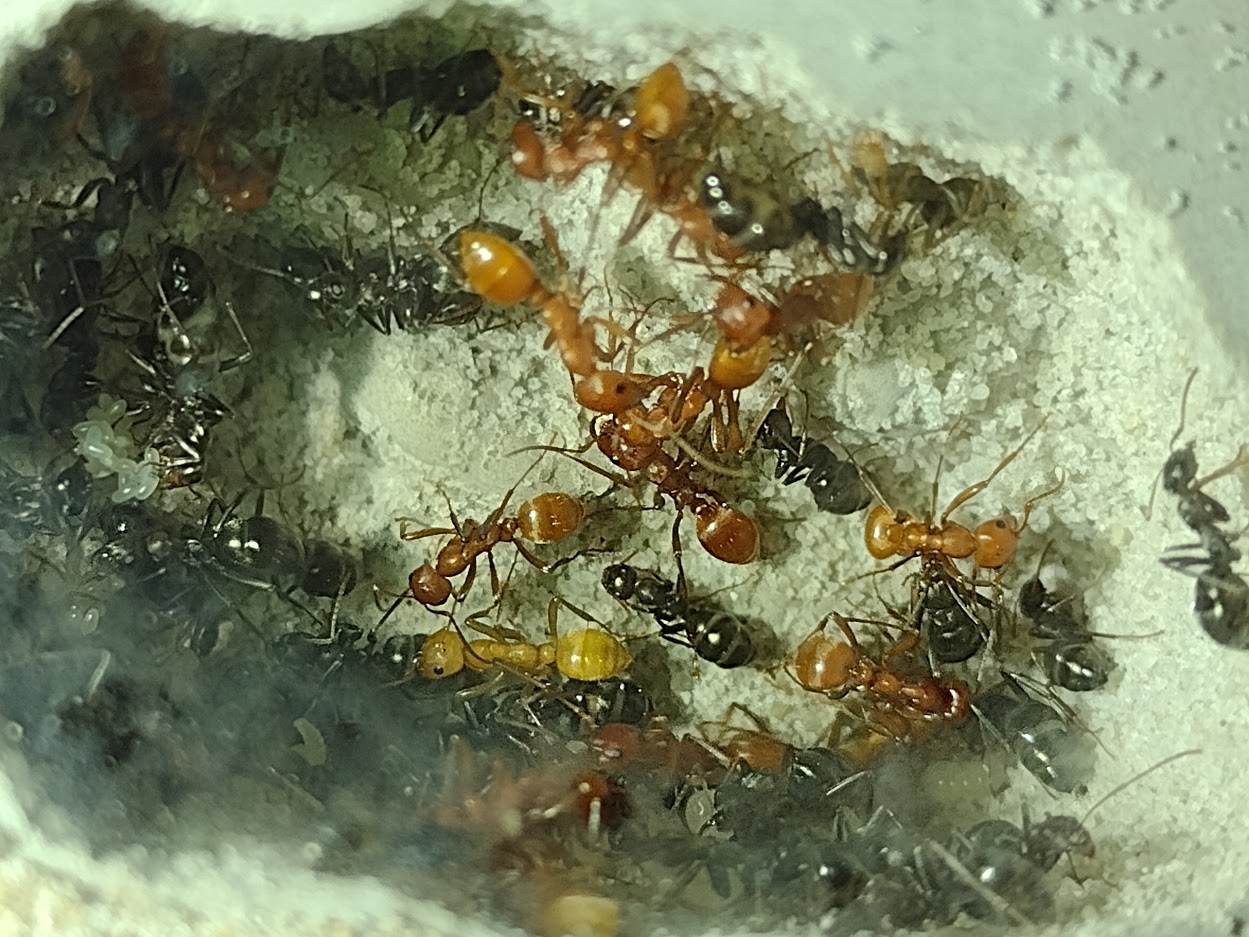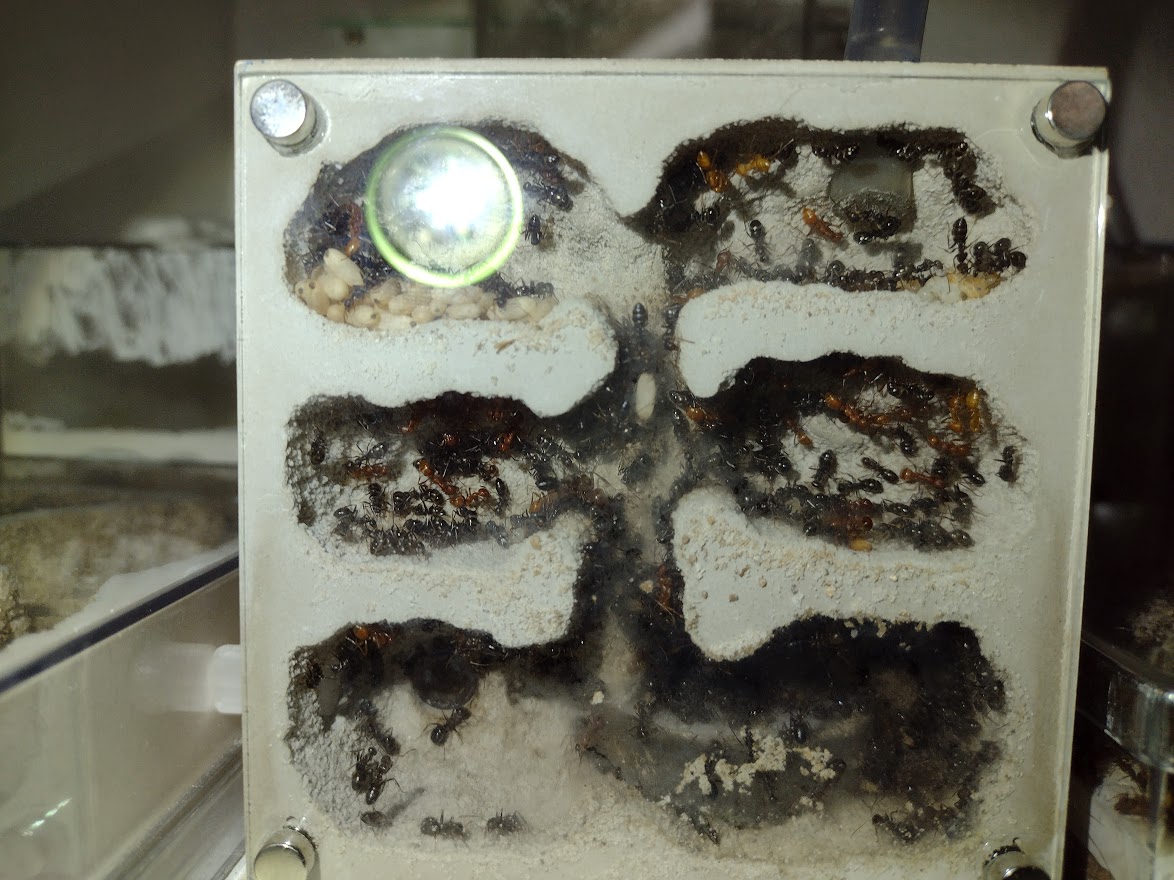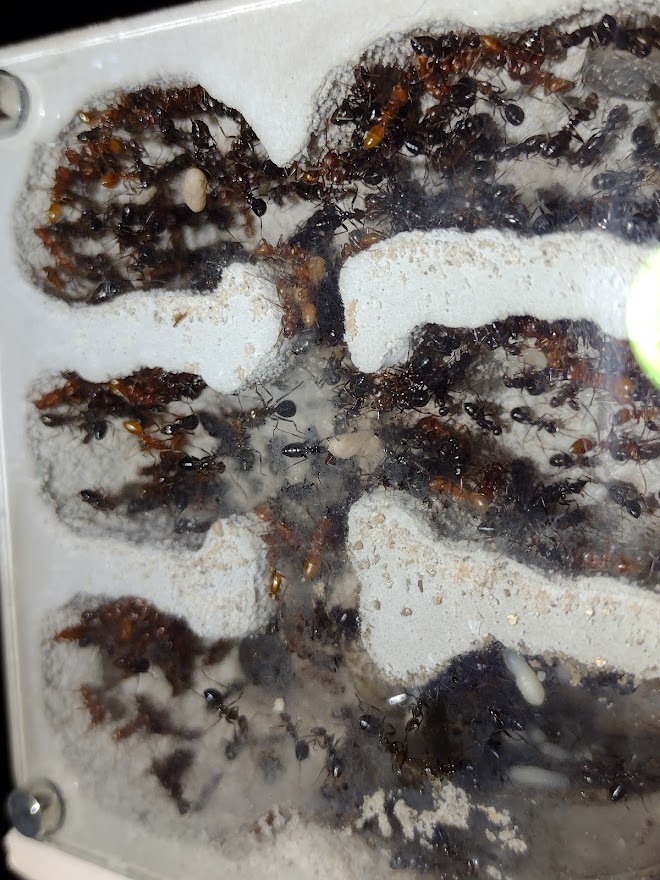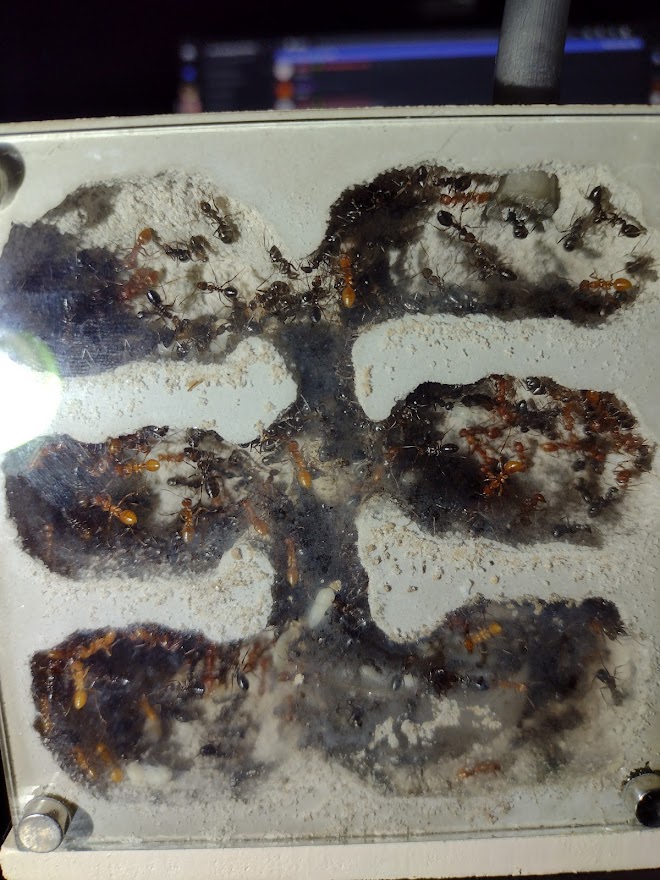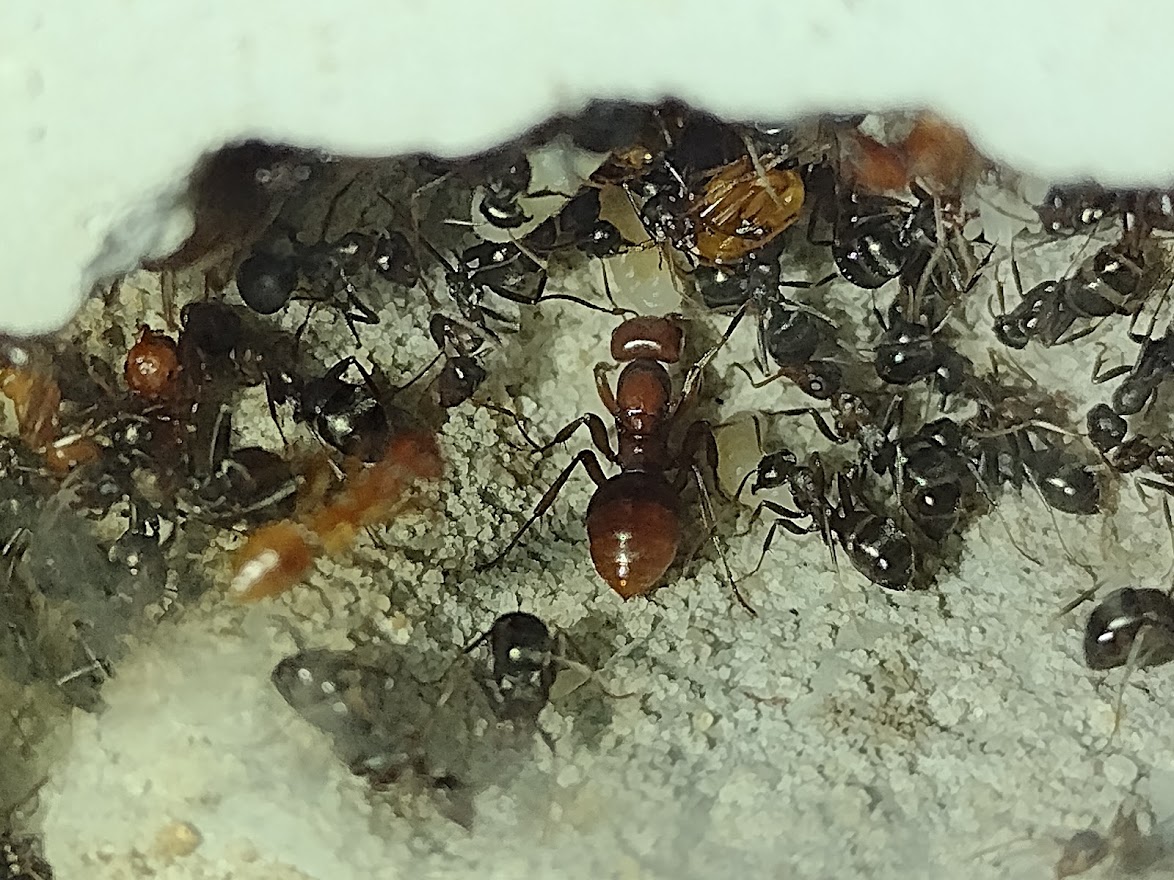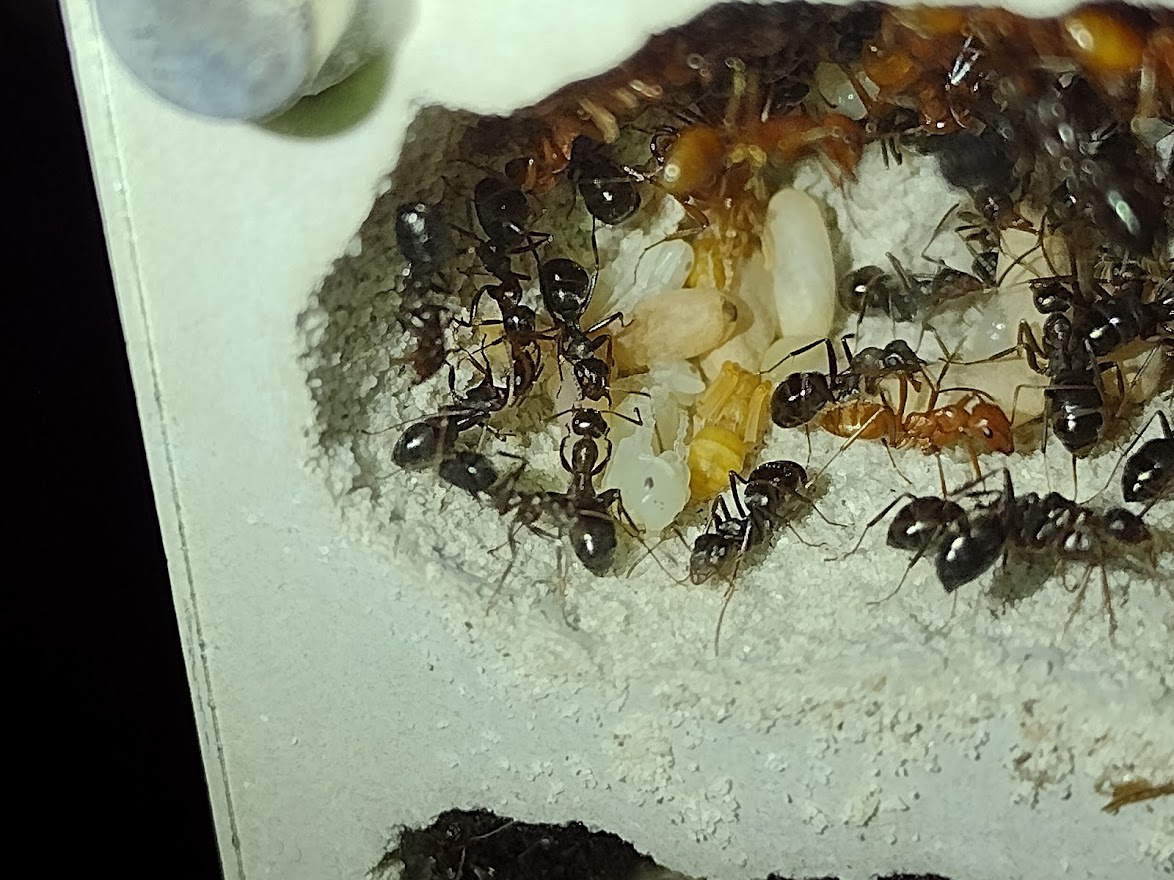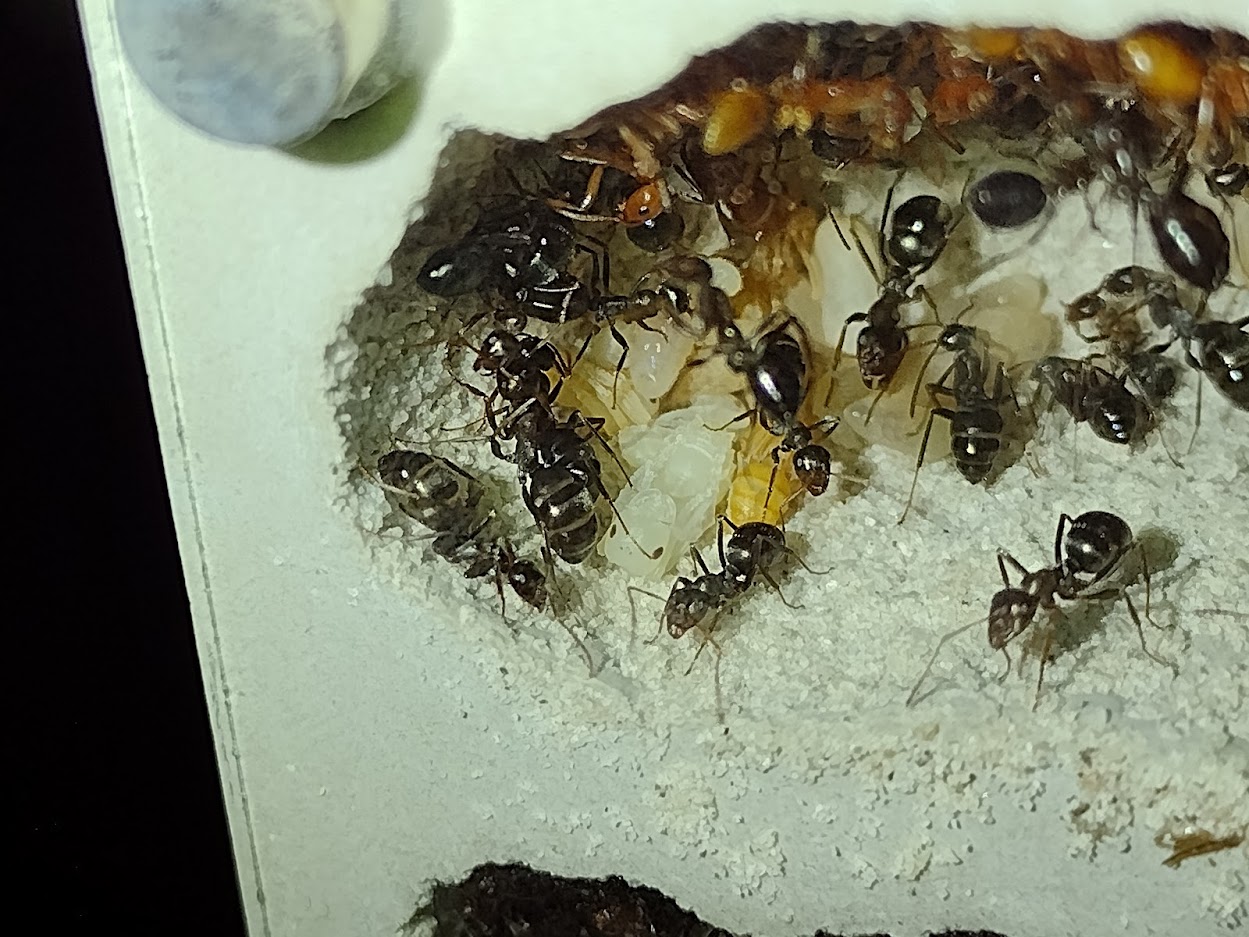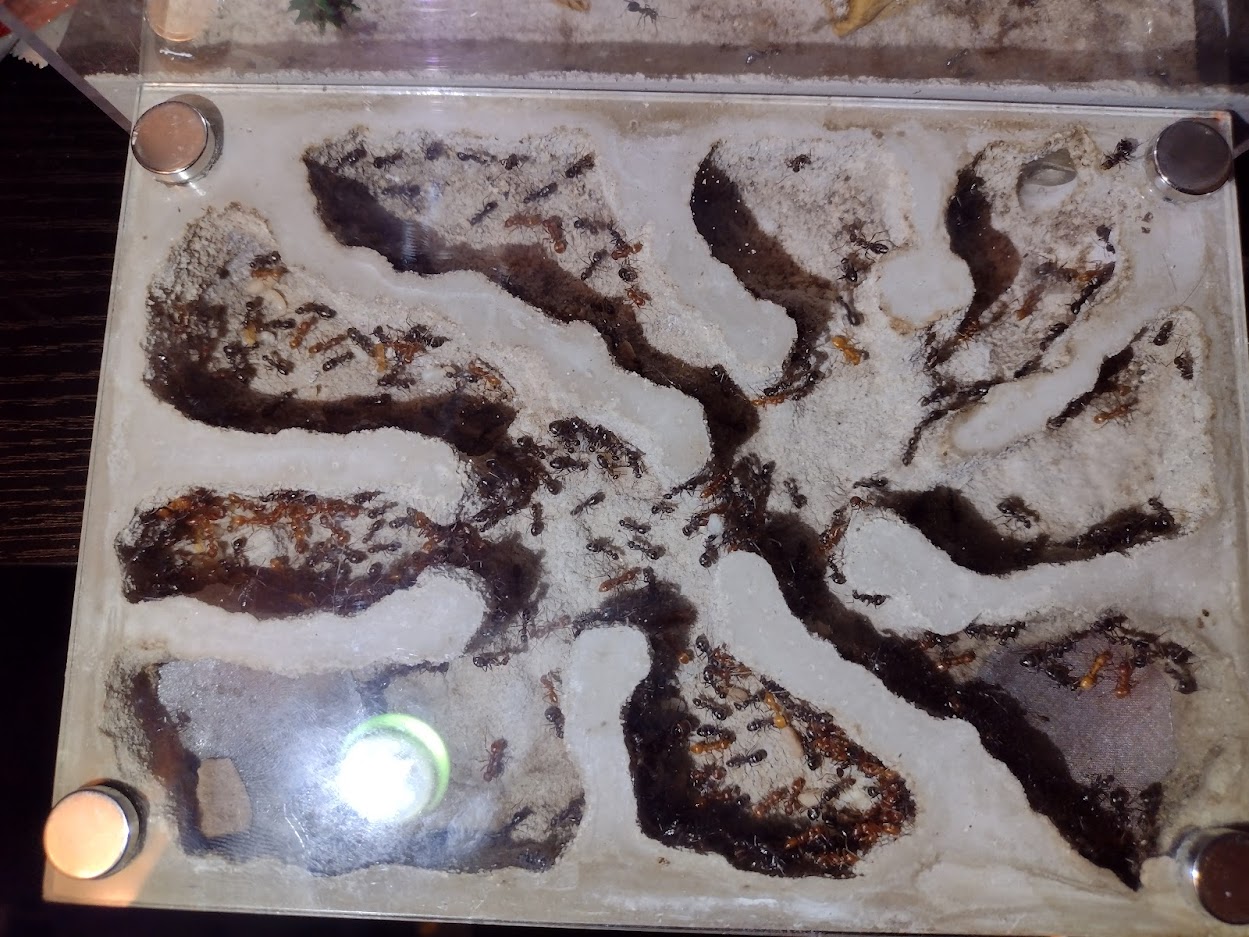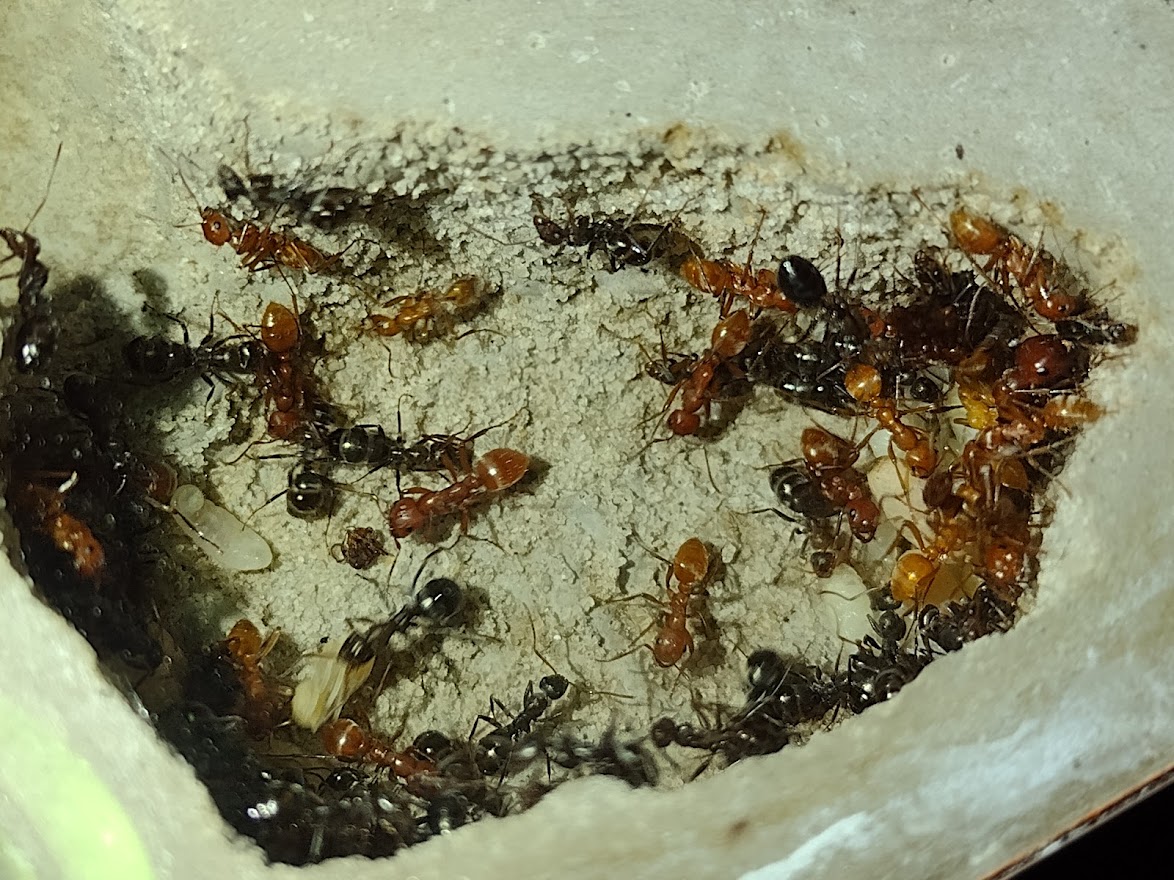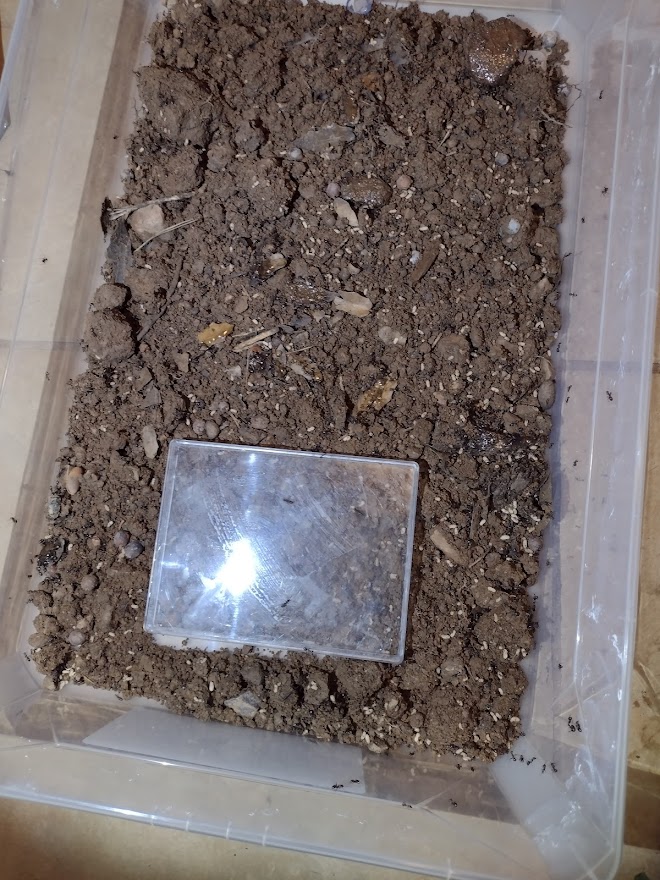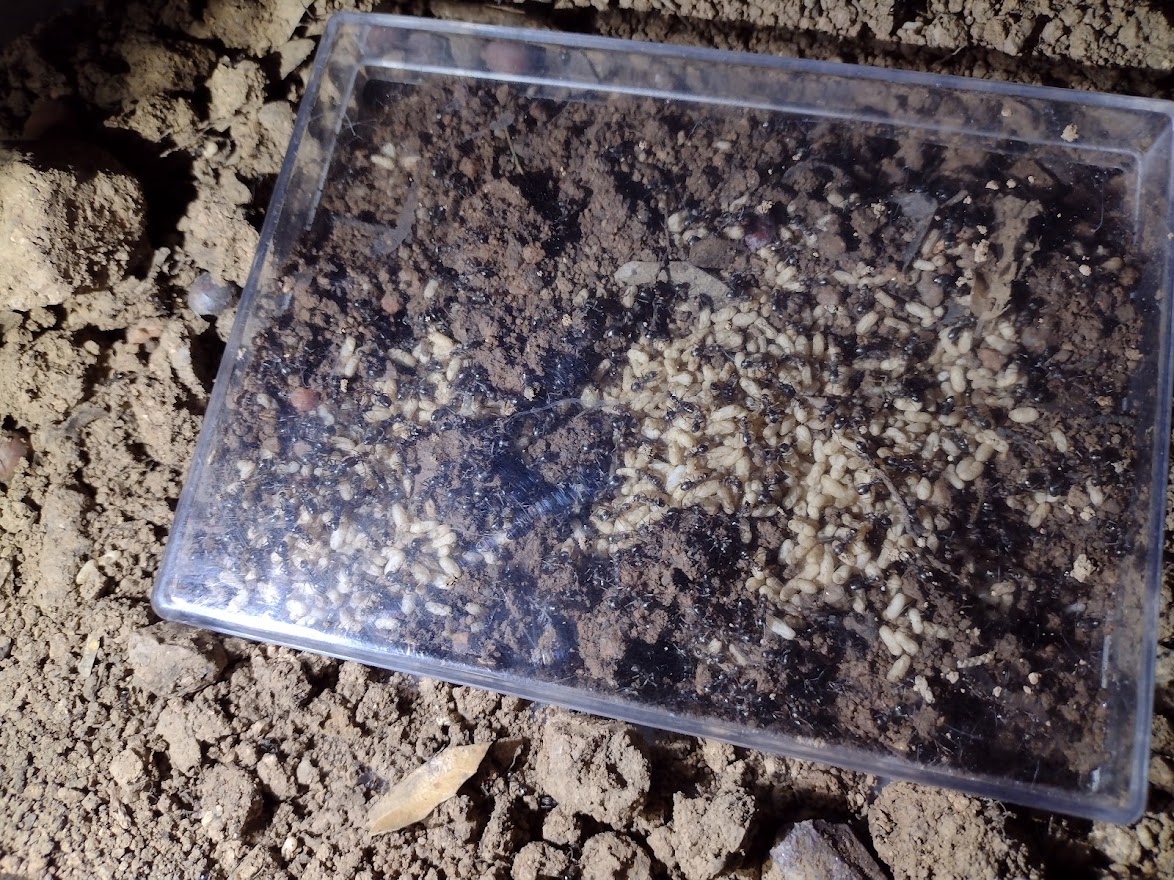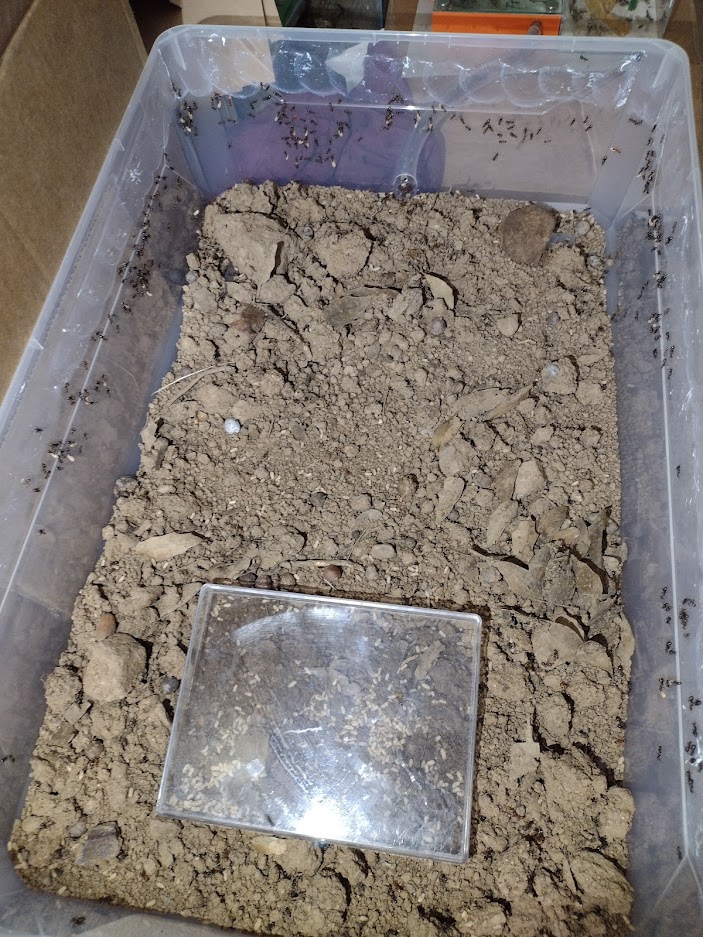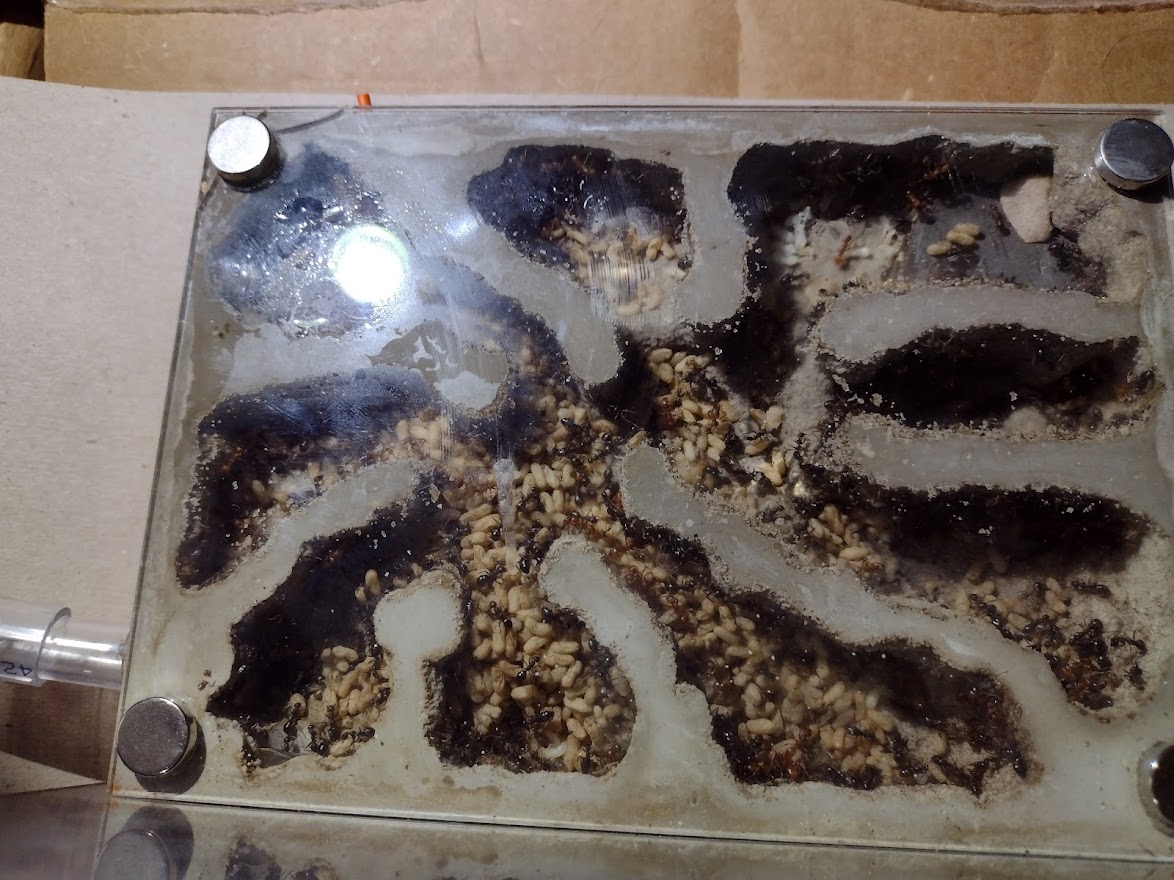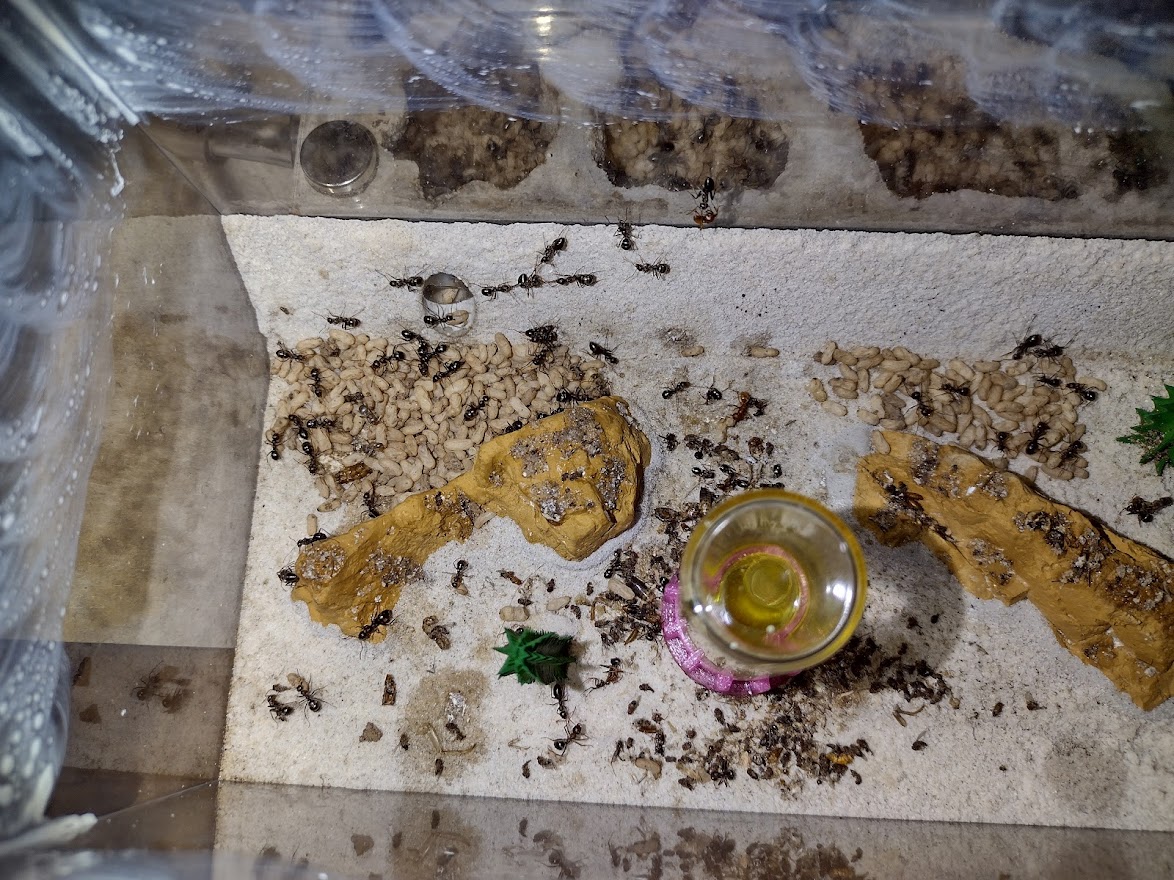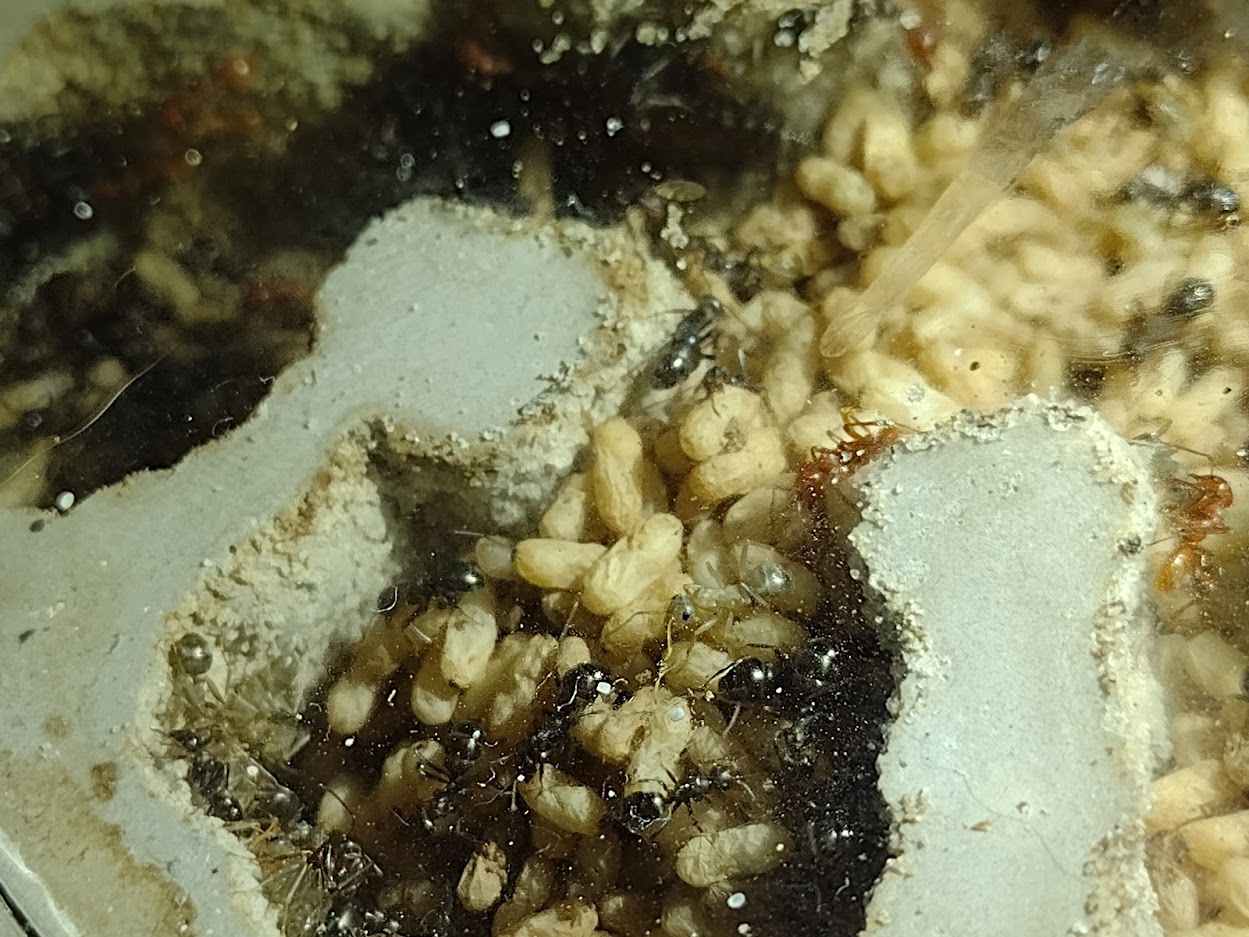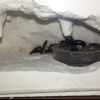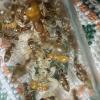Certainly an unexpected journal, but a seriously exciting one nonetheless.
While I was anting today near Aztec Peak, I was flipping rocks as per usual when I stumbled across a sight I never thought I'd find. The area had a relatively high density of Formica species, and I had actually been joking about the lack of parasites, such as parasitic Formica or Polyergus.
Well, one fairly large rock later, and I notice something that I was immediately able to understand. In the midst of a ton of angry Formica gnava workers, I noticed a single large, bright orange individual sitting in the dead center of the rock. If it wasn't obvious already, that orange ant was a Polyergus queen. In the field I had assumed her to be P. mexicanus, however F. gnava is not a known host species of P. mexicanus, and instead is one of only a few known hosts of P. topoffi. I'm relatively confident in coming to an ID consensus this way, however I will also be sure to key out a biological worker once I get enough.
Speaking of biological workers, this colony has none. It seems like this is a brand new queen who has just infiltrated a colony for the first time. This is awesome, as I'll get to have the experience of raising Polyergus to their first biological workers.
The queen is also substantially larger than I ever expected. I haven't measured her, but this image is a 20mm test tube. Seriously a monster compared to any Formica queen I've seen.
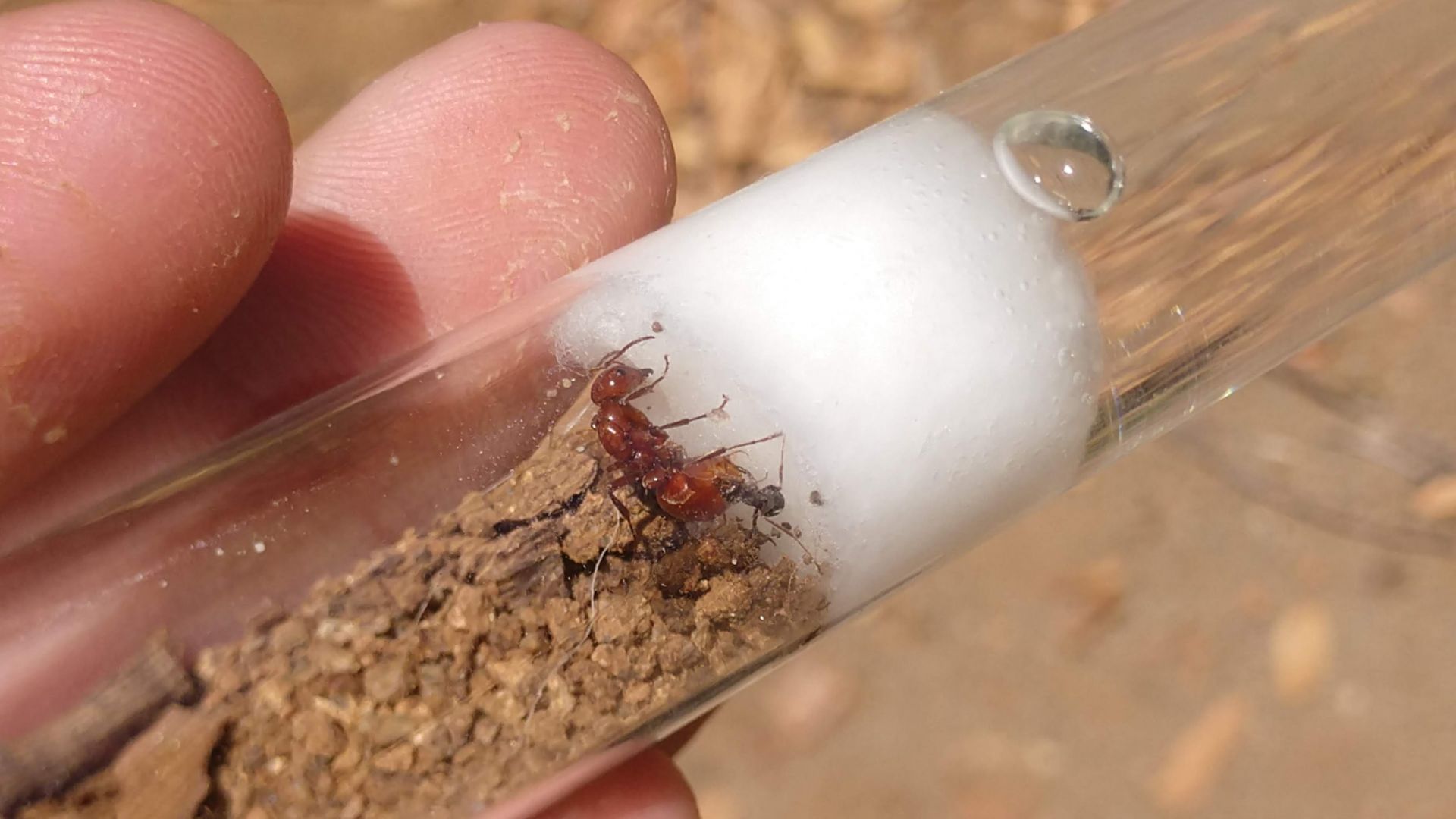
I managed to collect as many of the host workers as possible by shoveling up the soil they were nesting in and putting them in a large ziploc bag. I have since dumped them into a bin with a barrier, and hooked that up to a Tarheel Ants Fortress. I had kept the Polyergus queen separate (with 5 host workers) to make sure she wouldn't be injured in transport, and placed her and the few hosts into the formicarium. Unfortunately when the ants in the bin found the ones in the formicarium, and instead of moving in, they dragged the queen and the workers back into the dirt bin. I'm hoping that they'll be smart enough to go back to the formicarium when the dirt dries out, otherwise I don't know what I'll do.
Another unfortunate thing is that while I have a claustral Formica colony, that species (F. podzolica) is not a known host of Polyergus topoffi. I know where to collect Formica gnava brood/colonies, however anybody who's experienced that species knows that they are quite the formidable opponent. Their formic acid is extremely potent, and larger colonies can create a cloud of gas around their nest that is impossible to breathe in. Stealing brood or collecting colonies of them is going to be quite the wild ride, but I think it'll end up being worth it for the Polyergus.
Edited by CheetoLord02, August 23 2021 - 9:07 PM.







